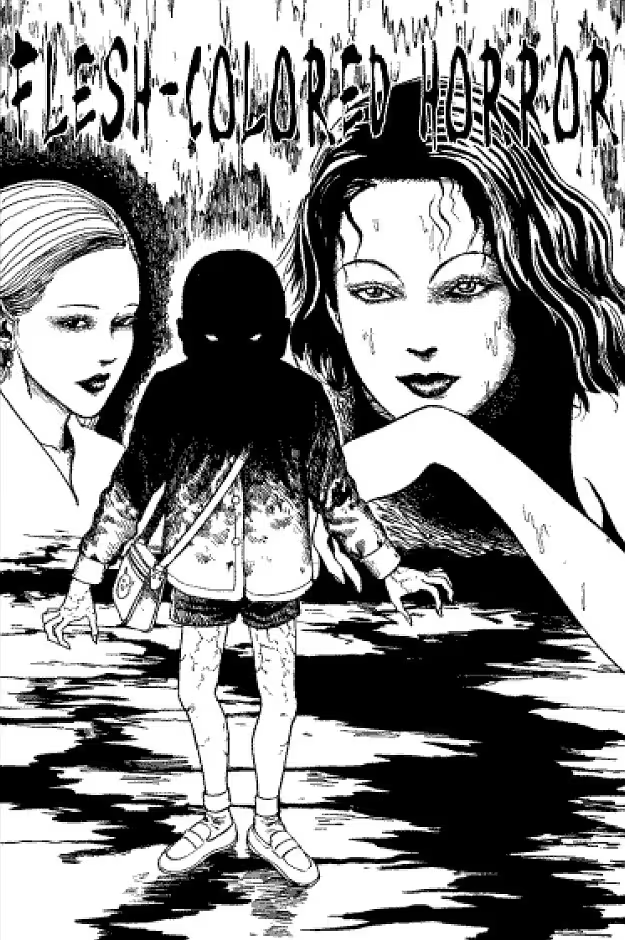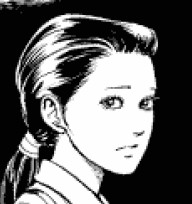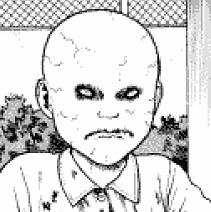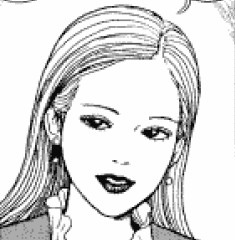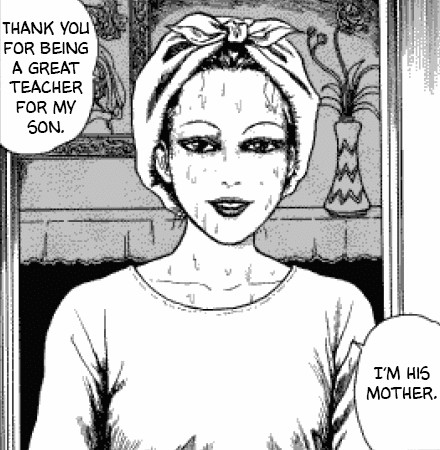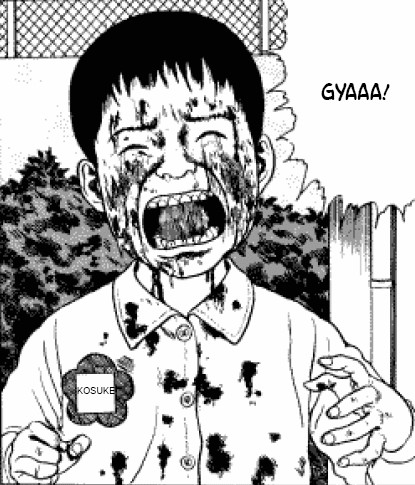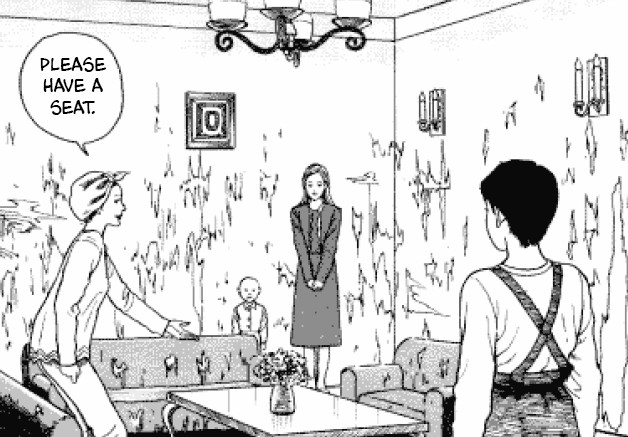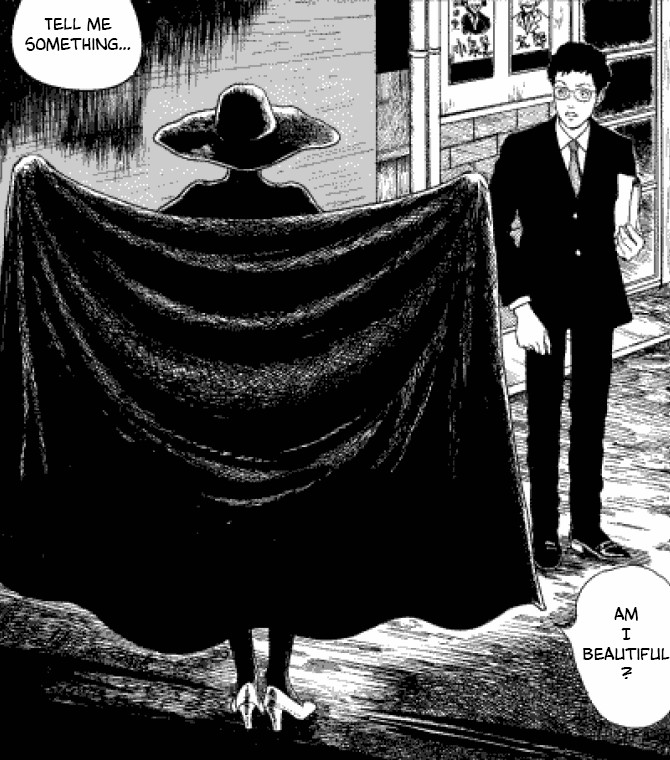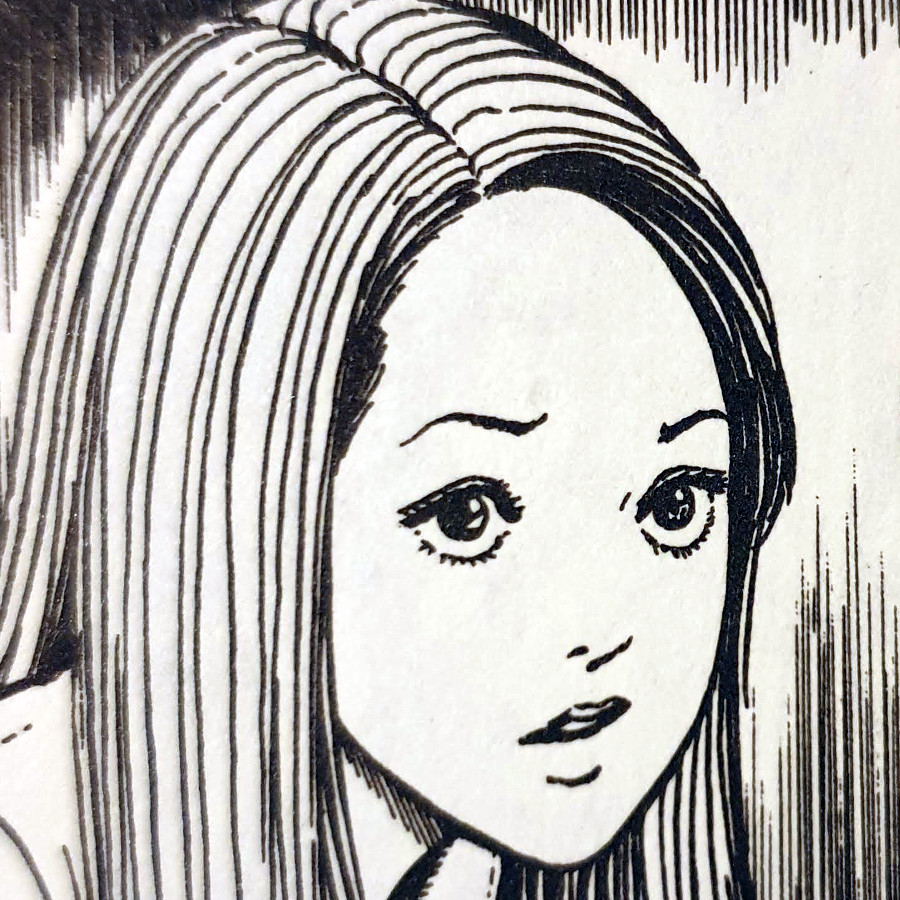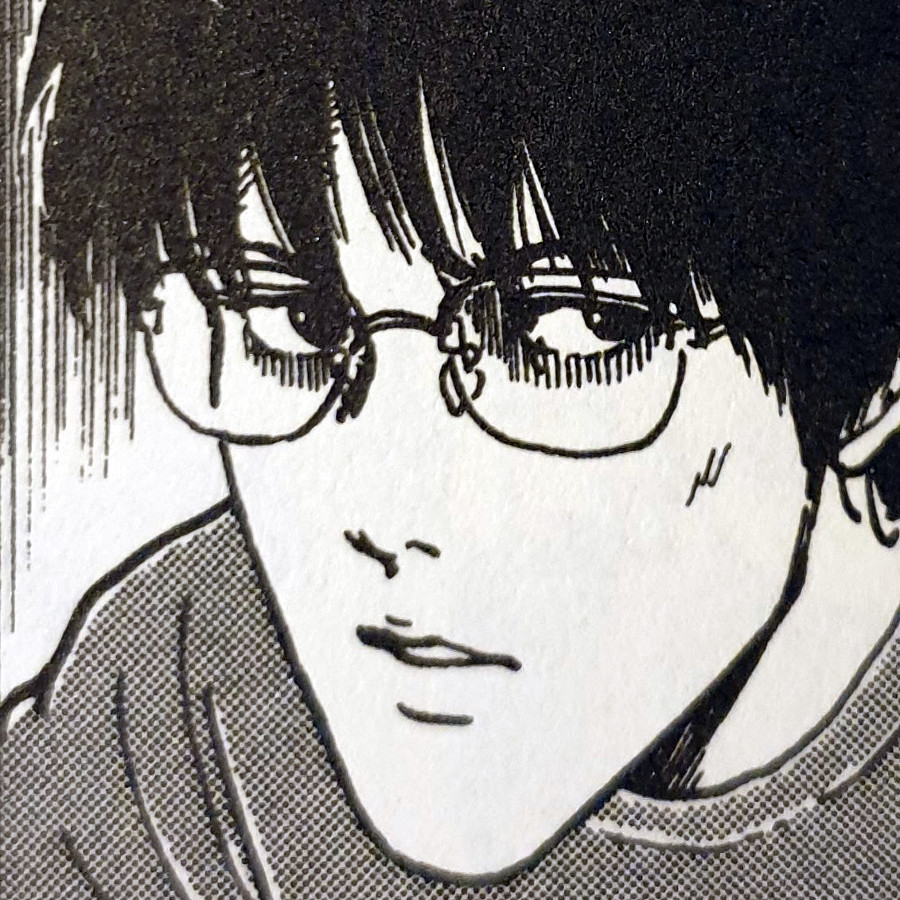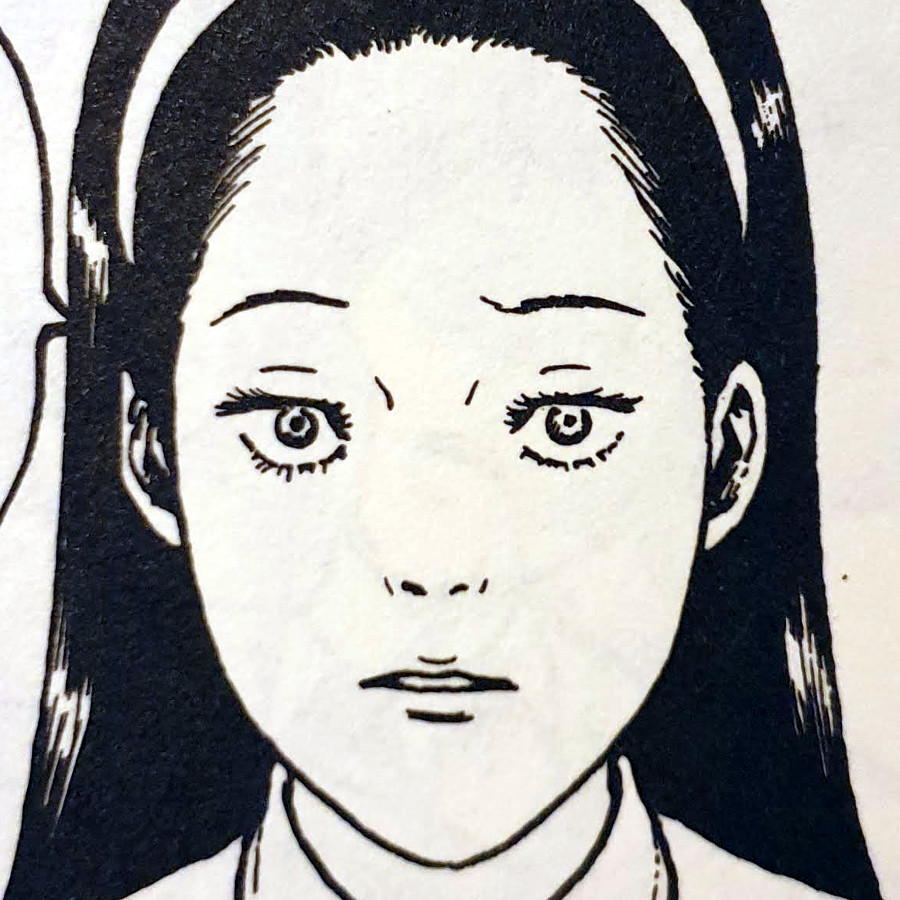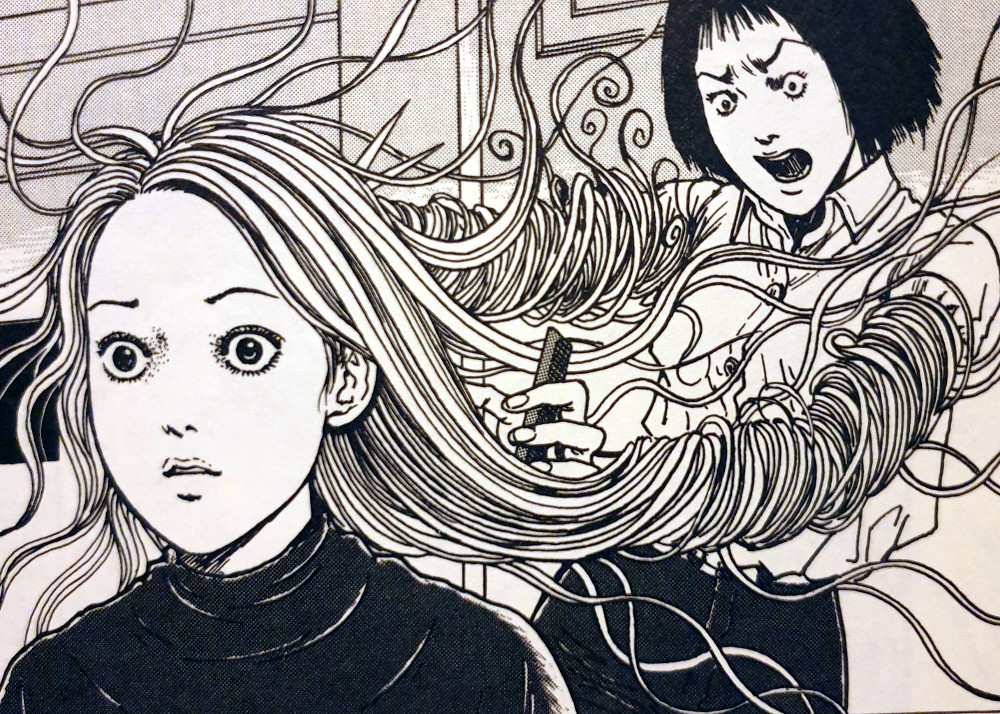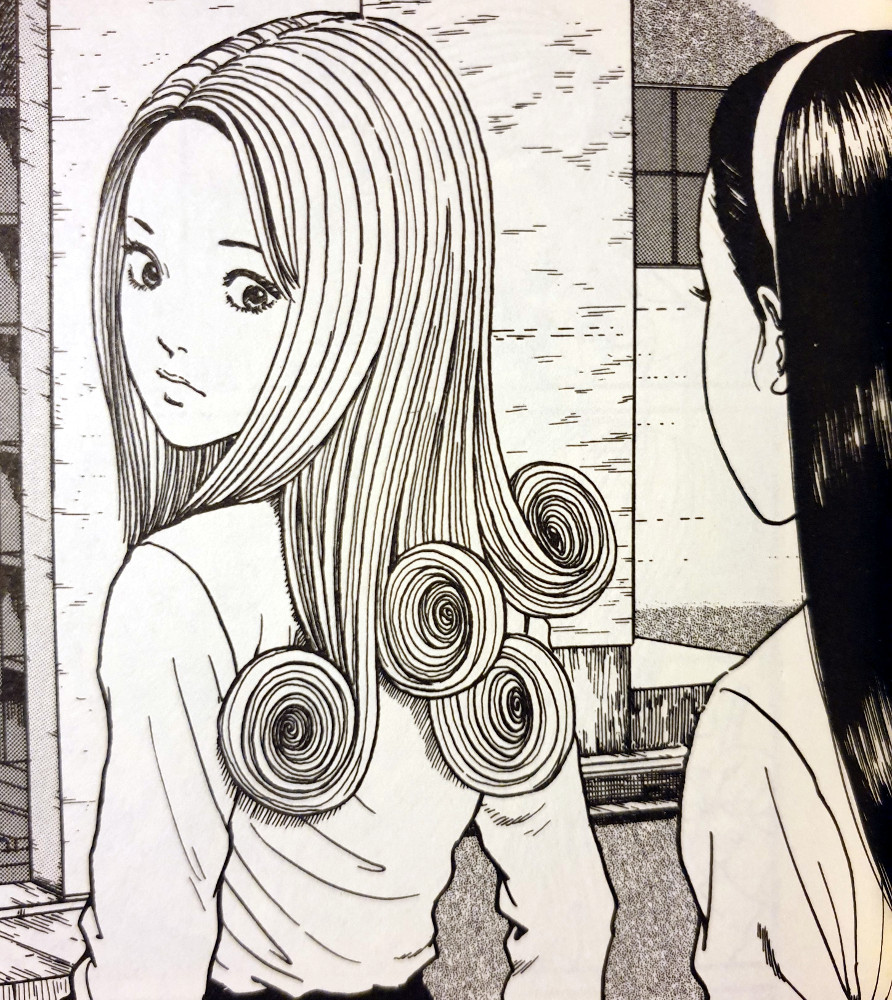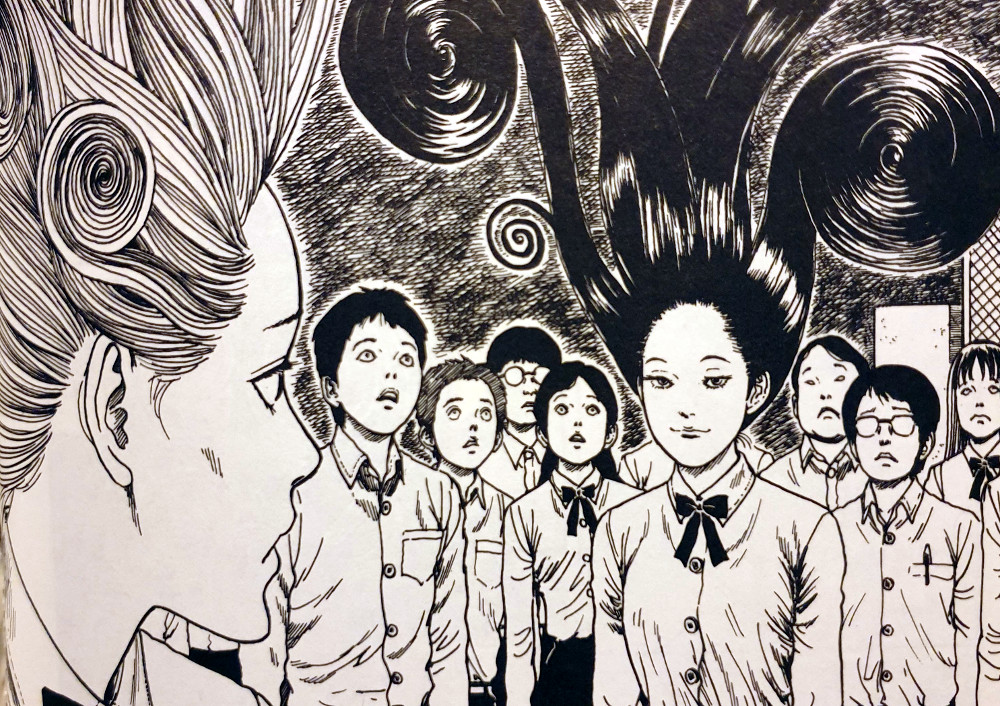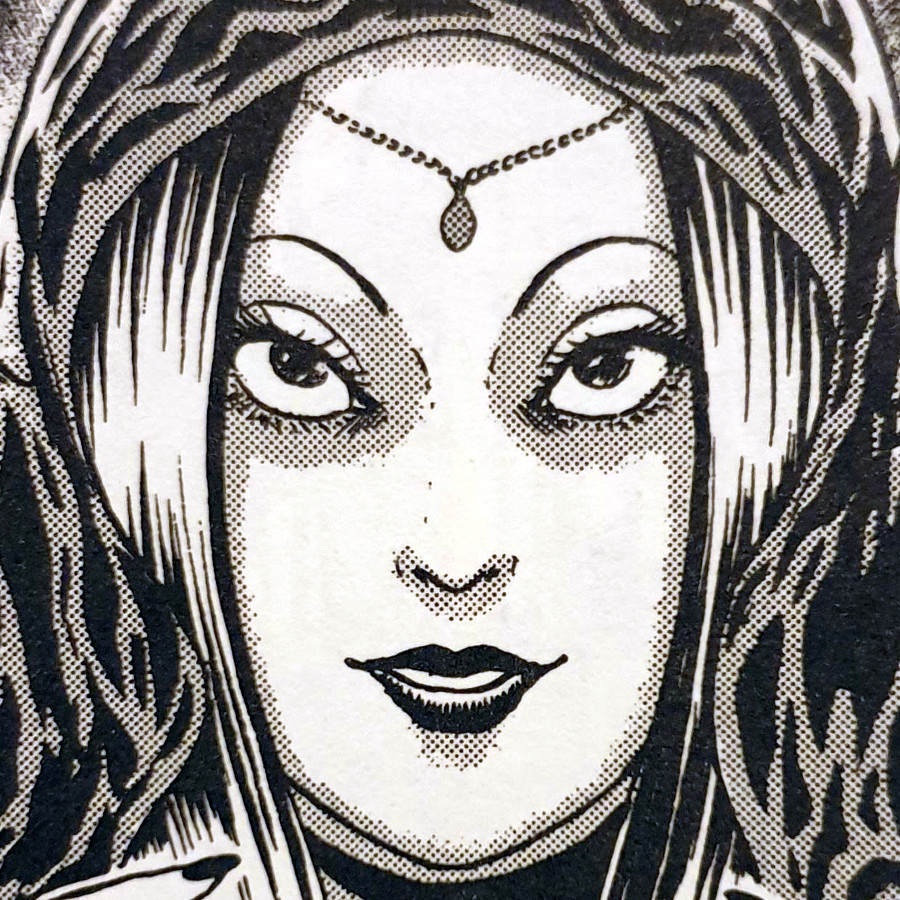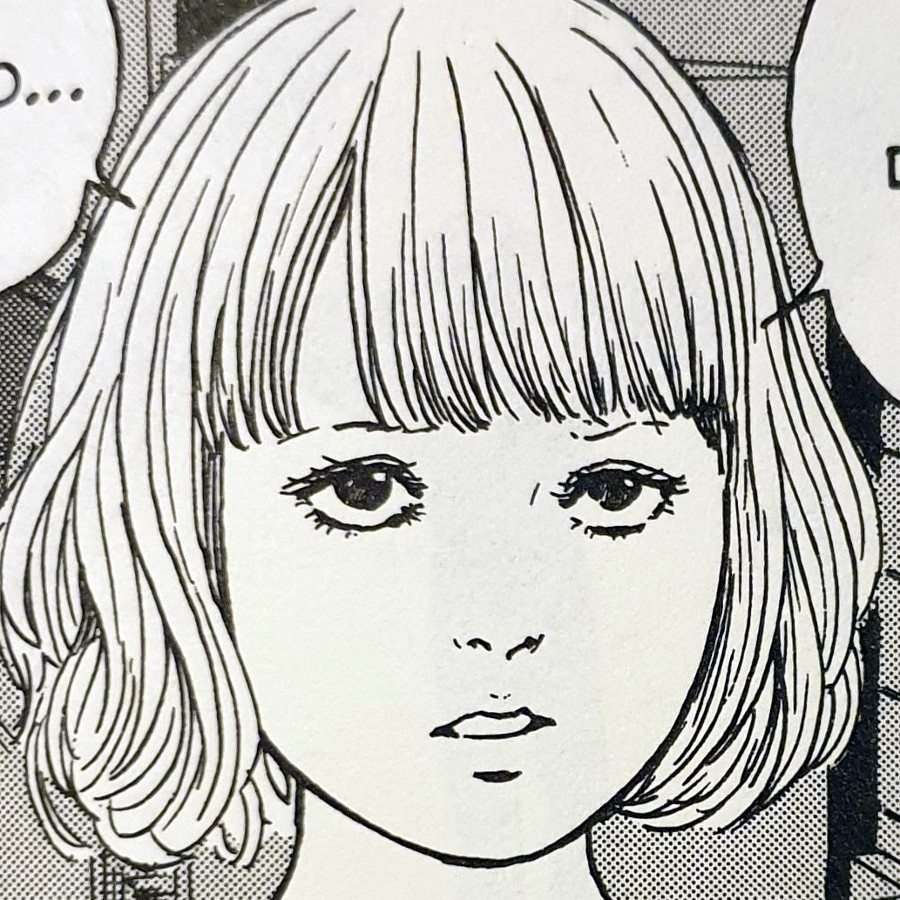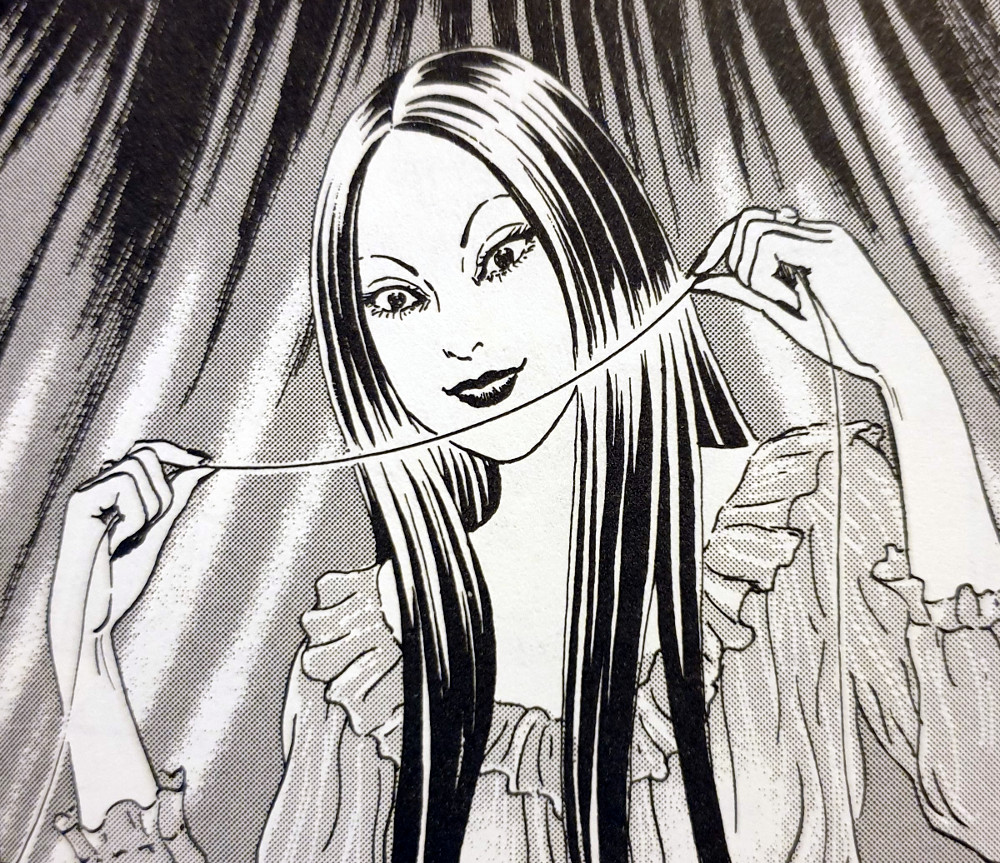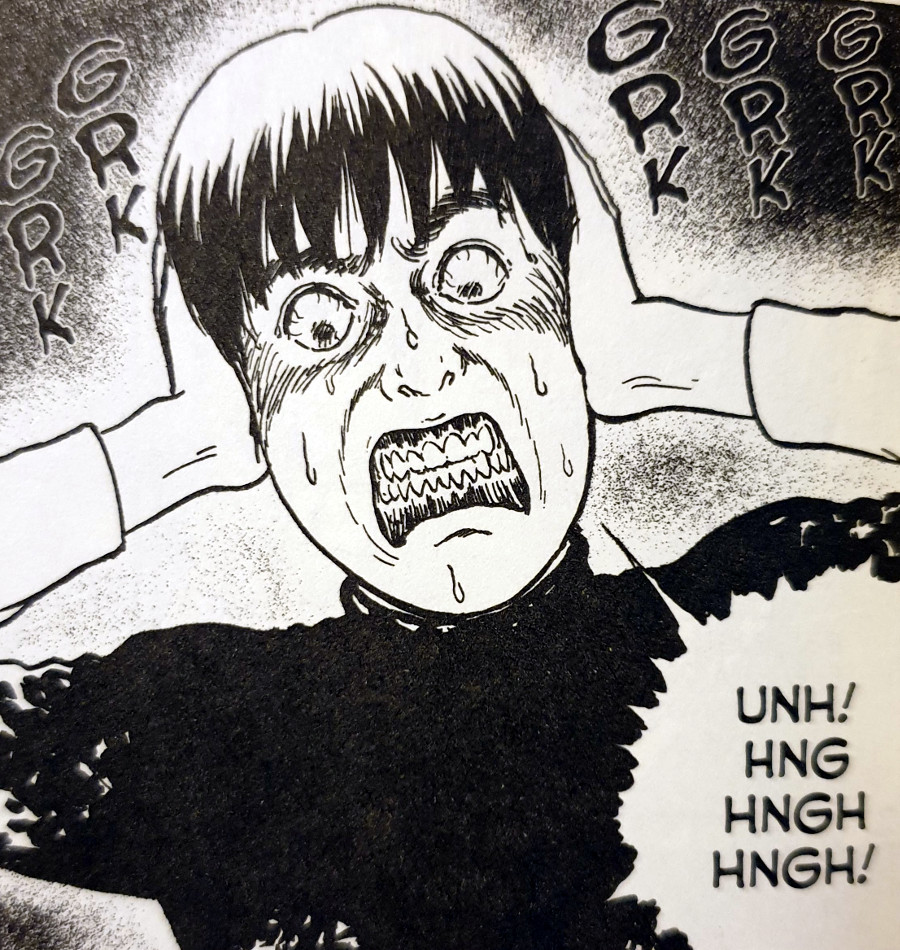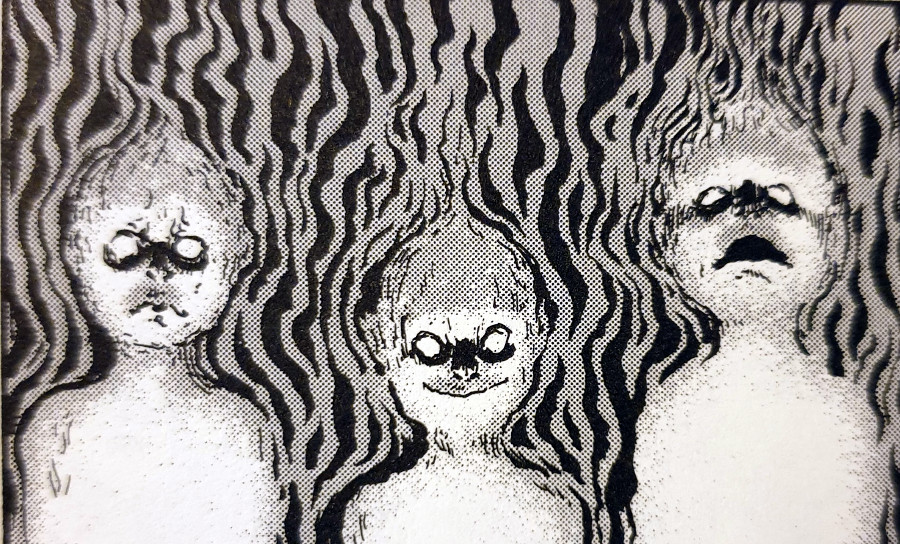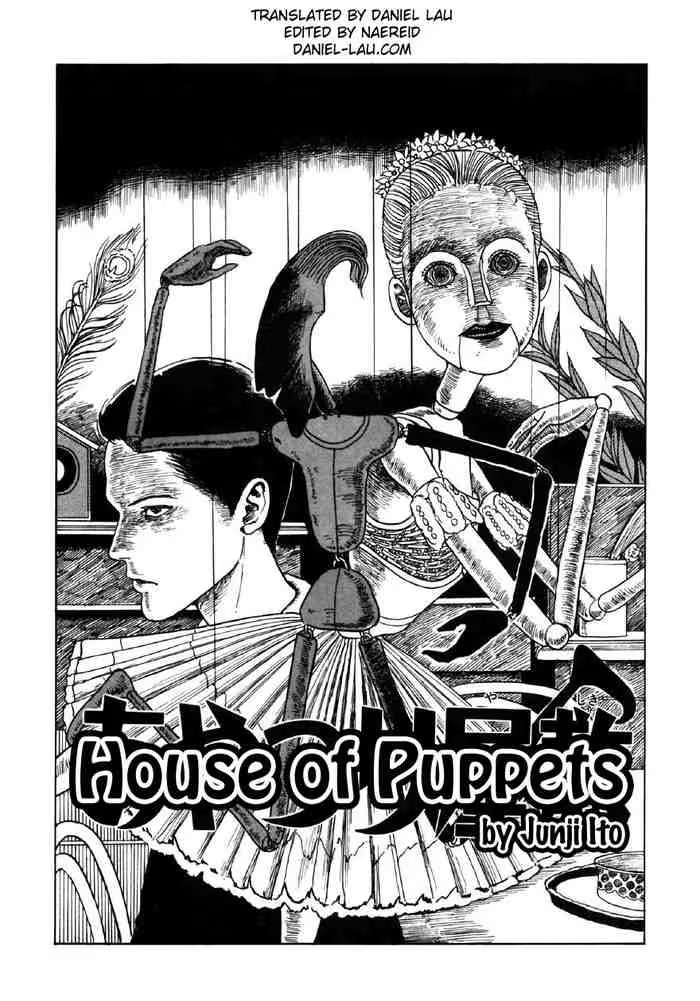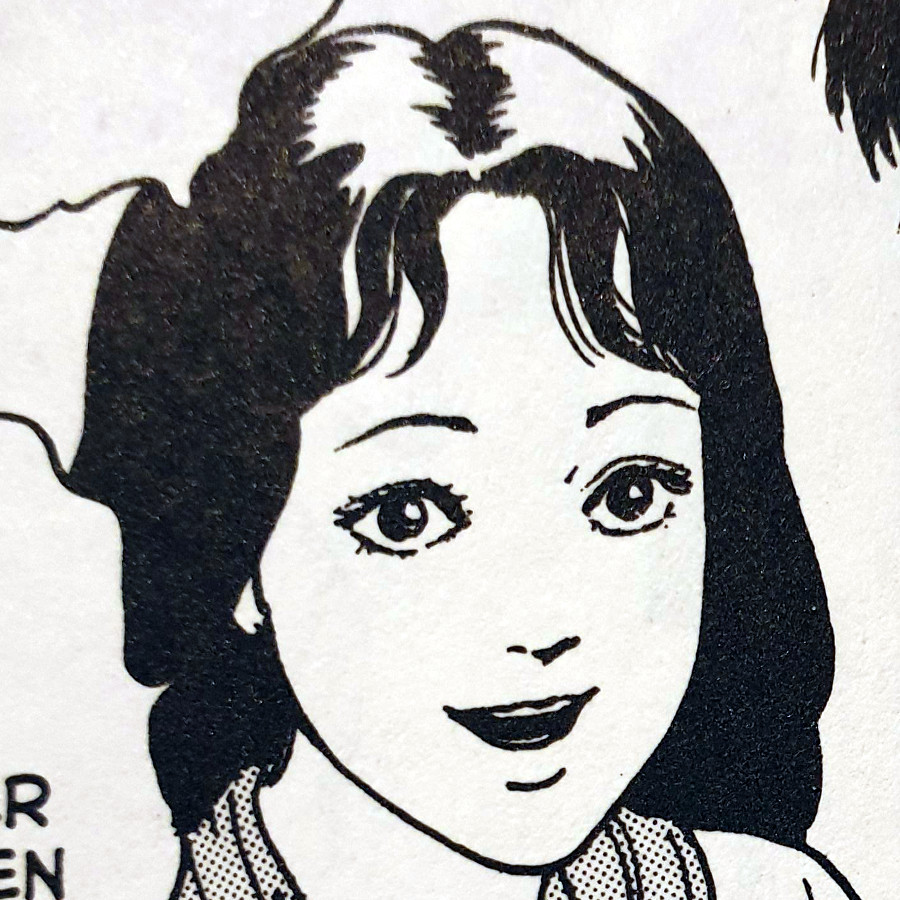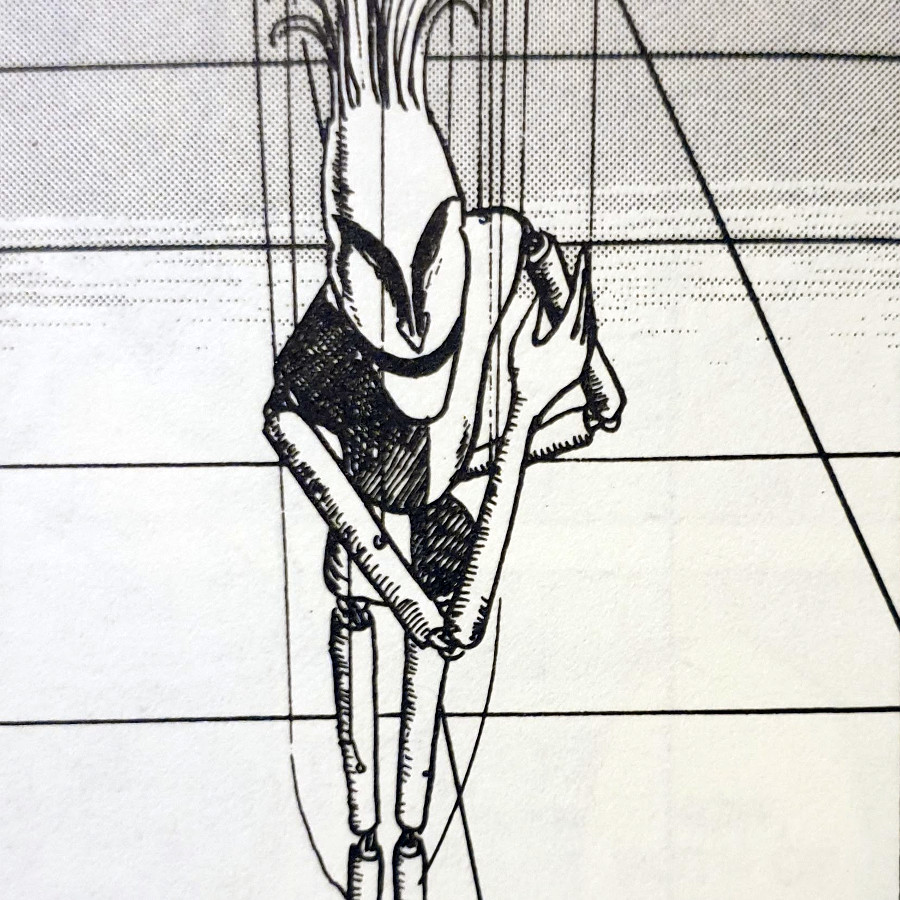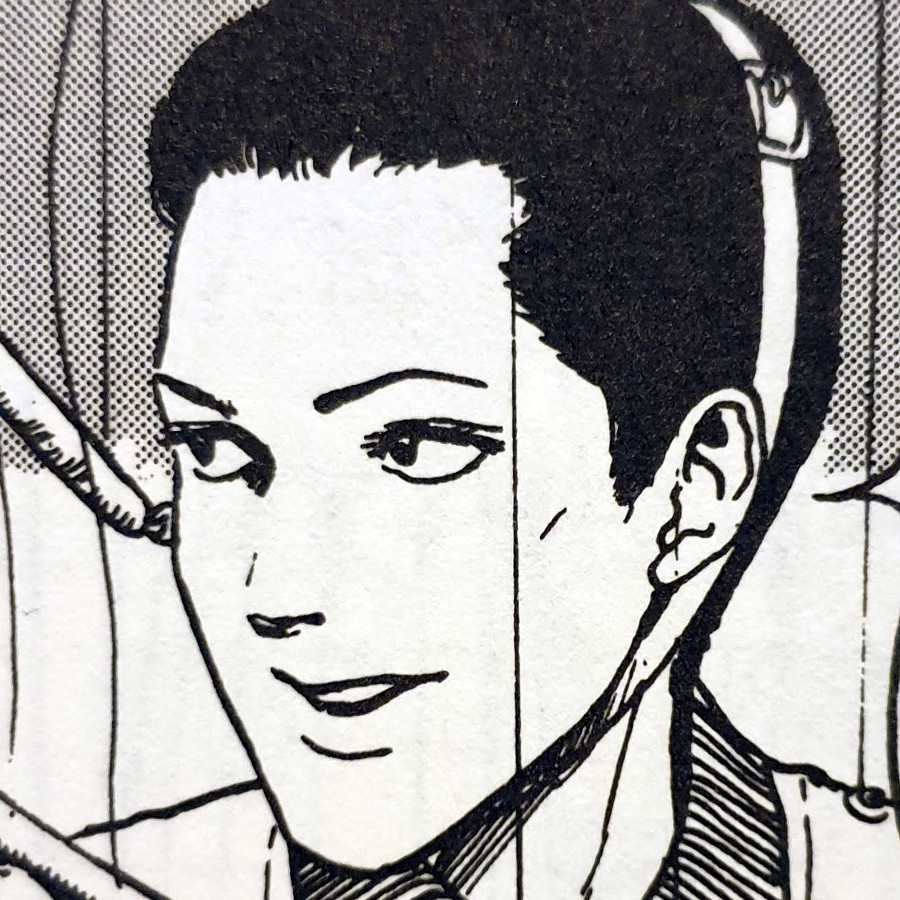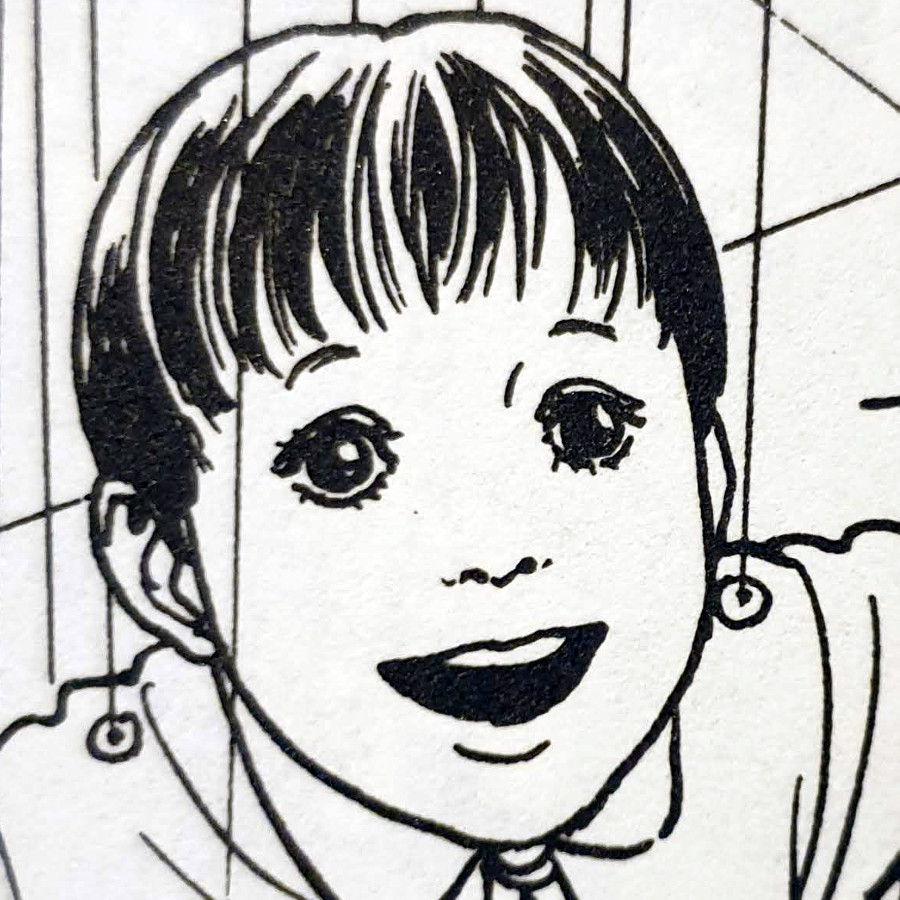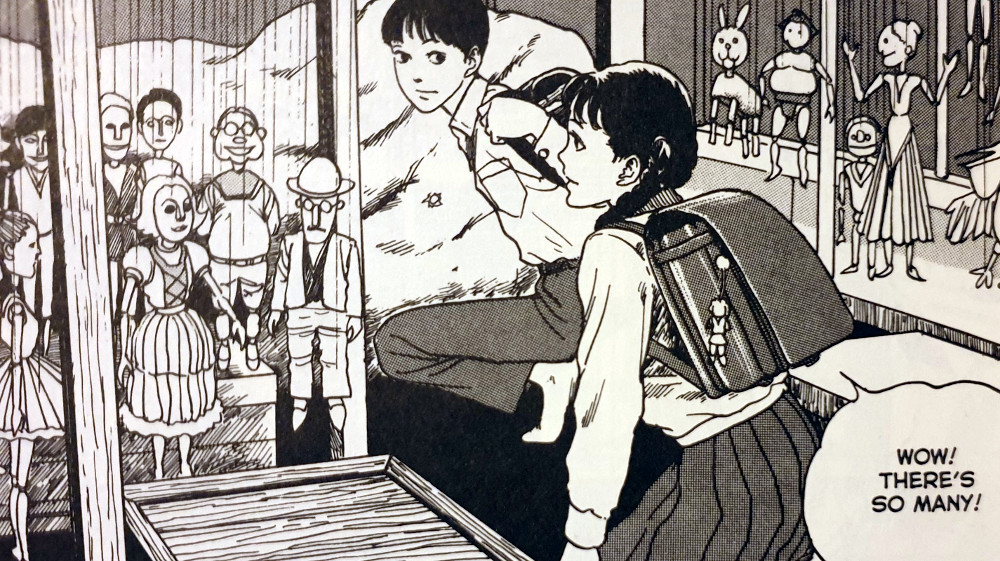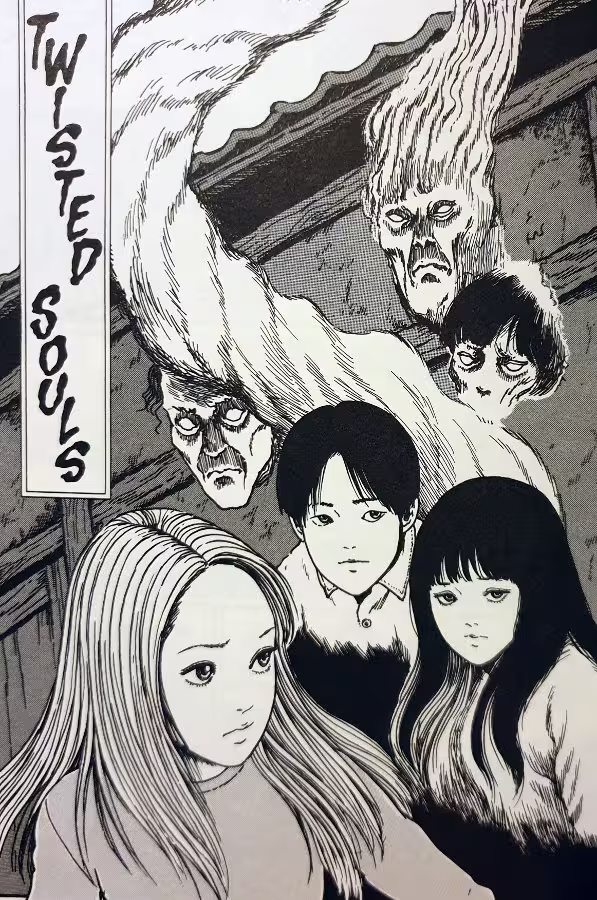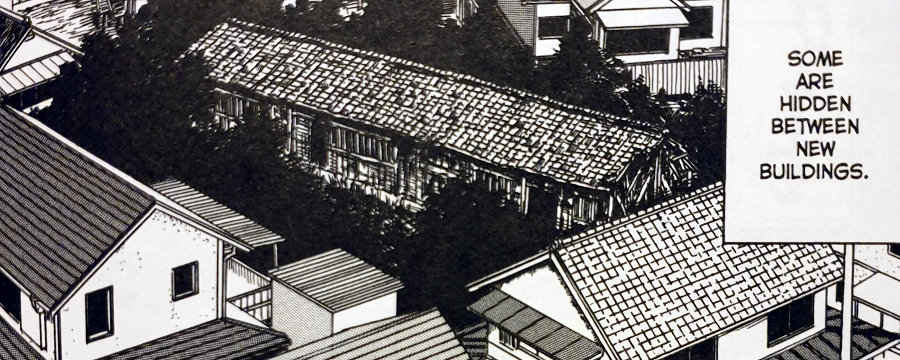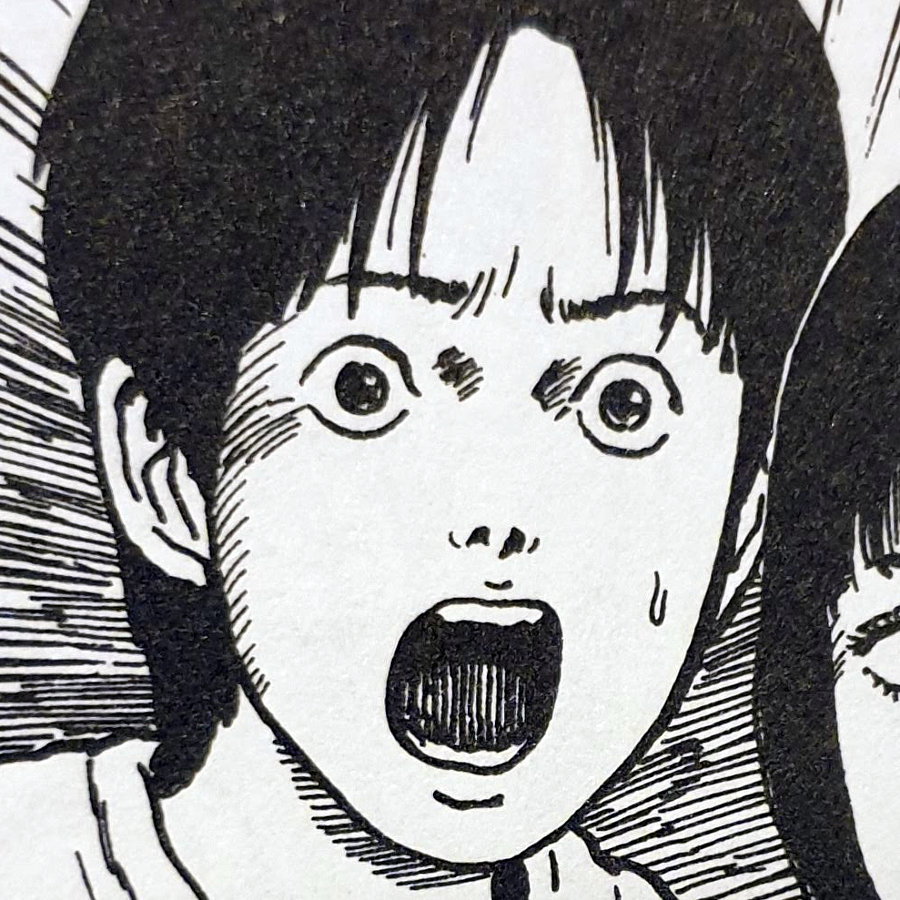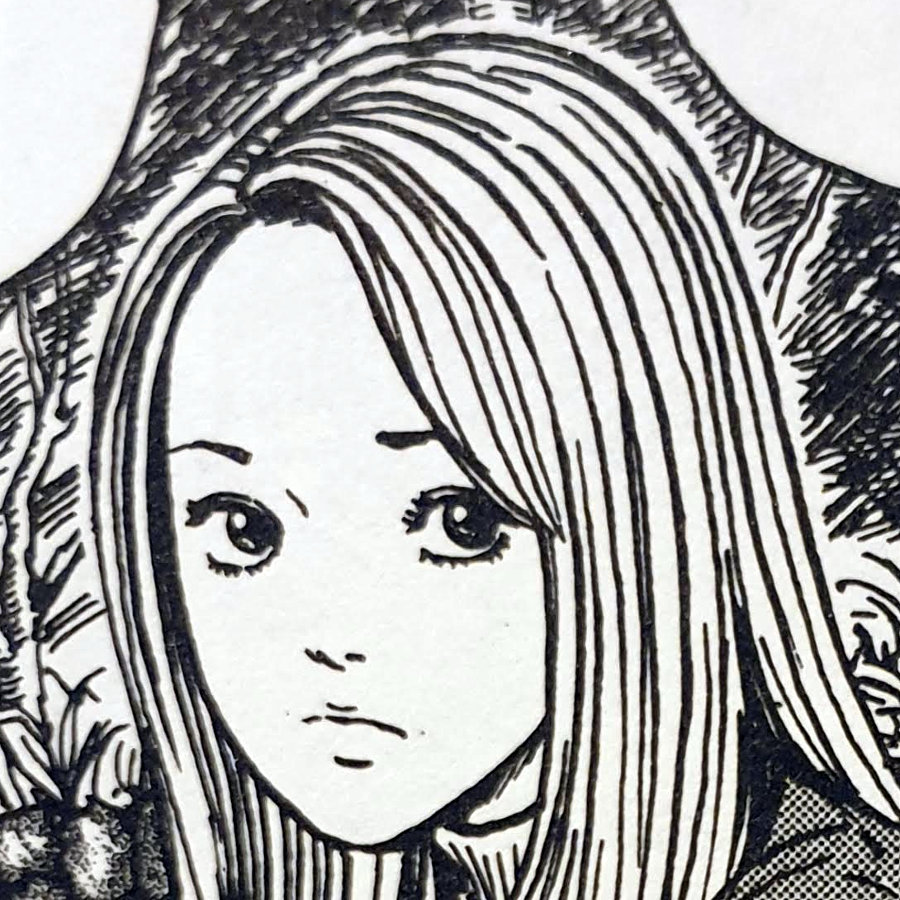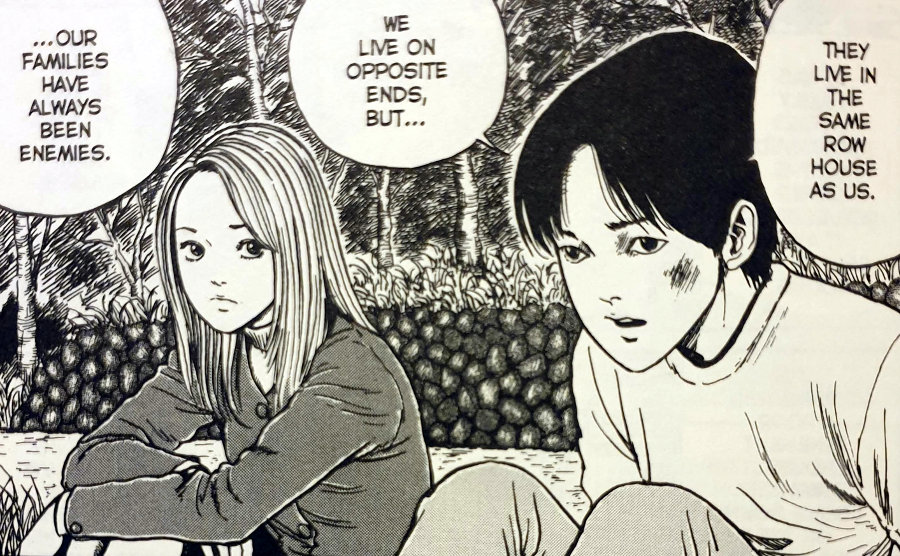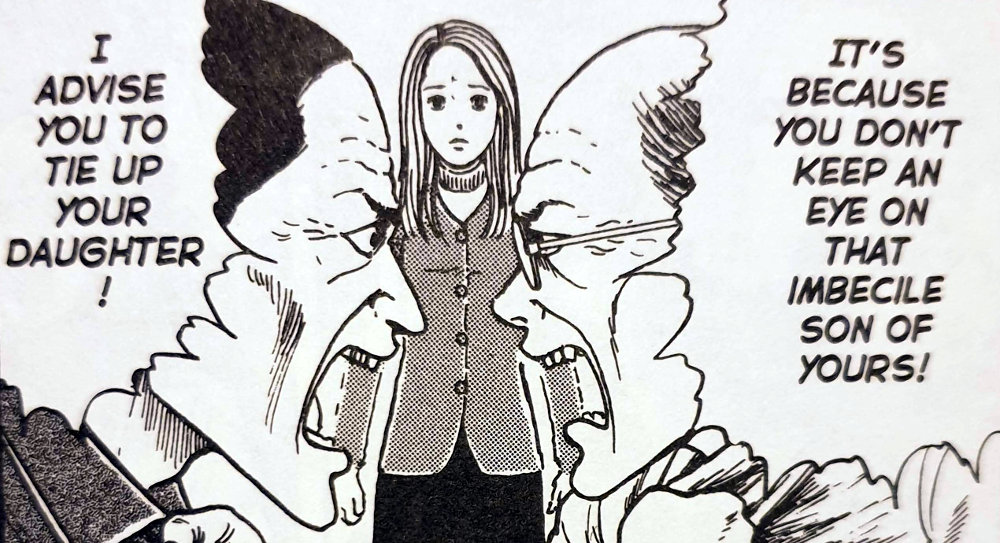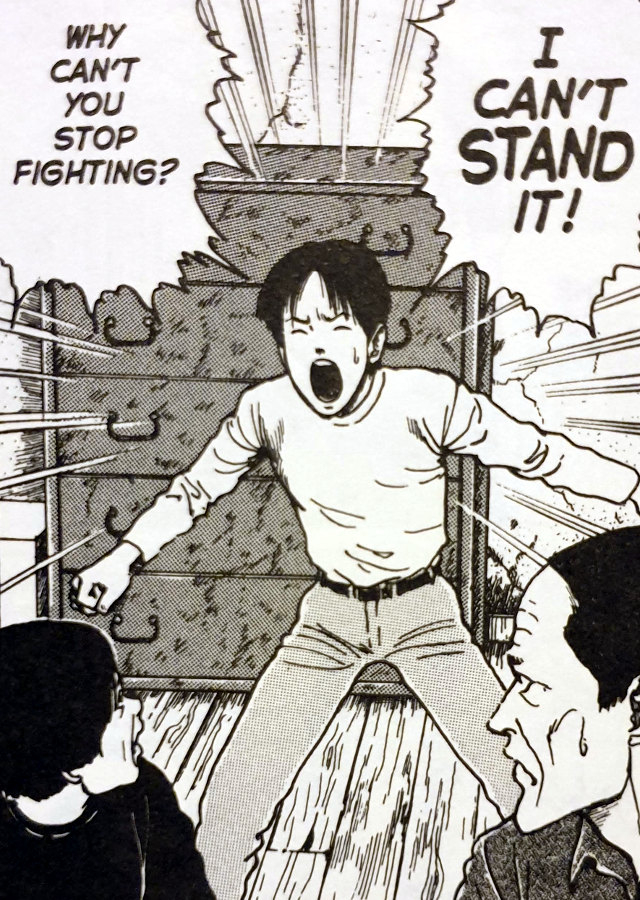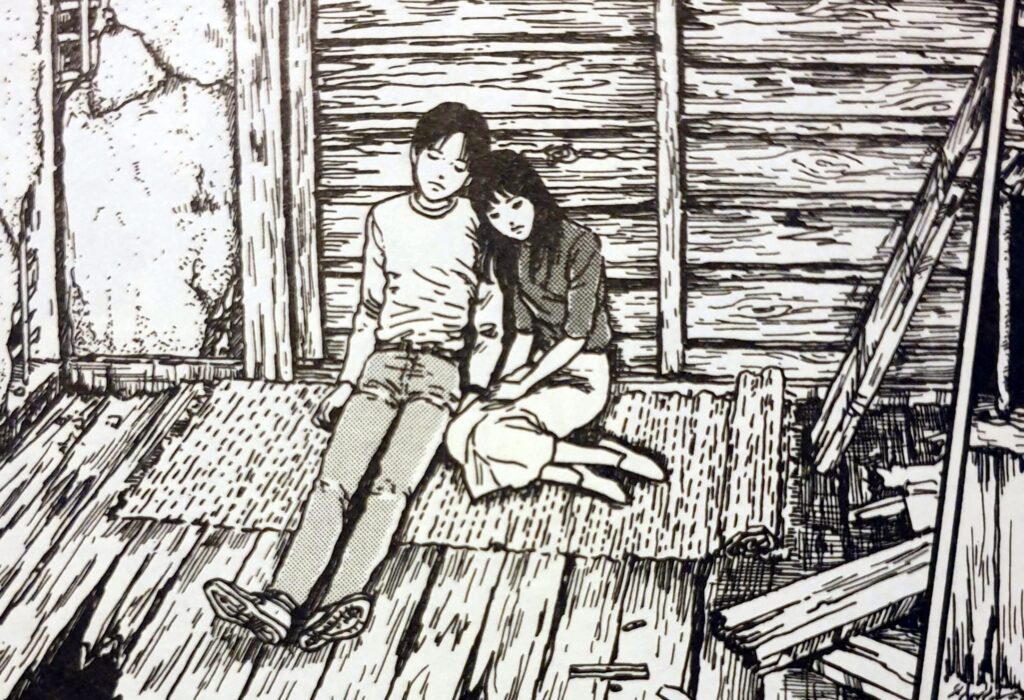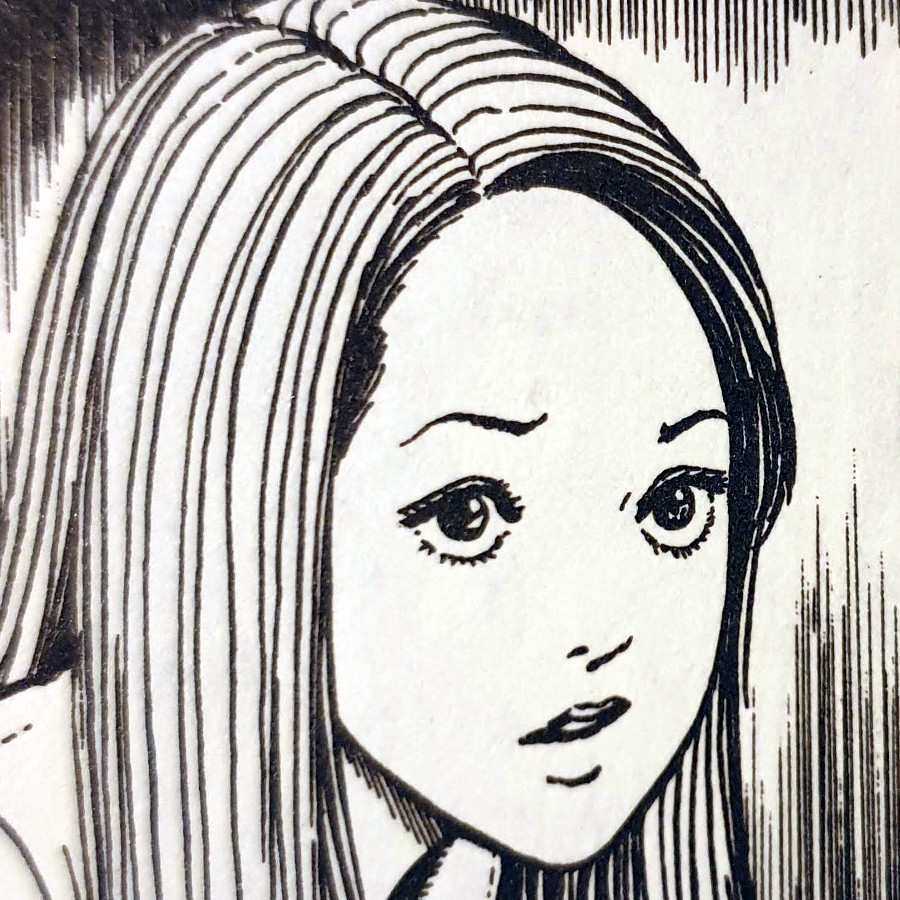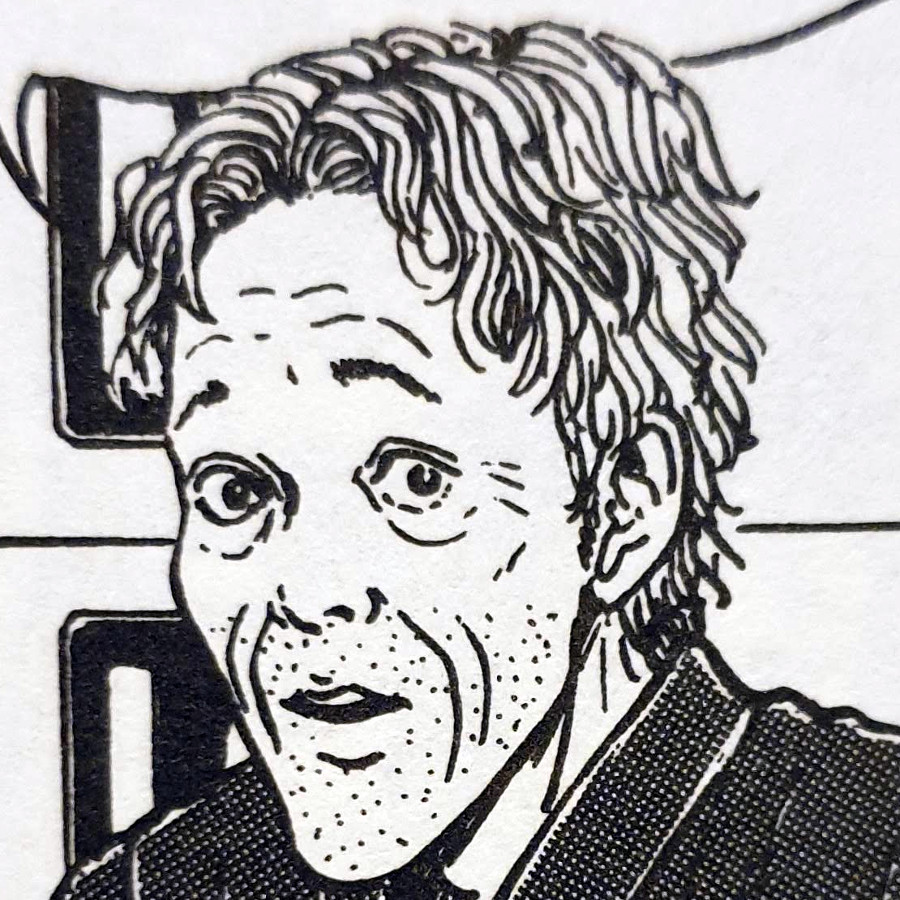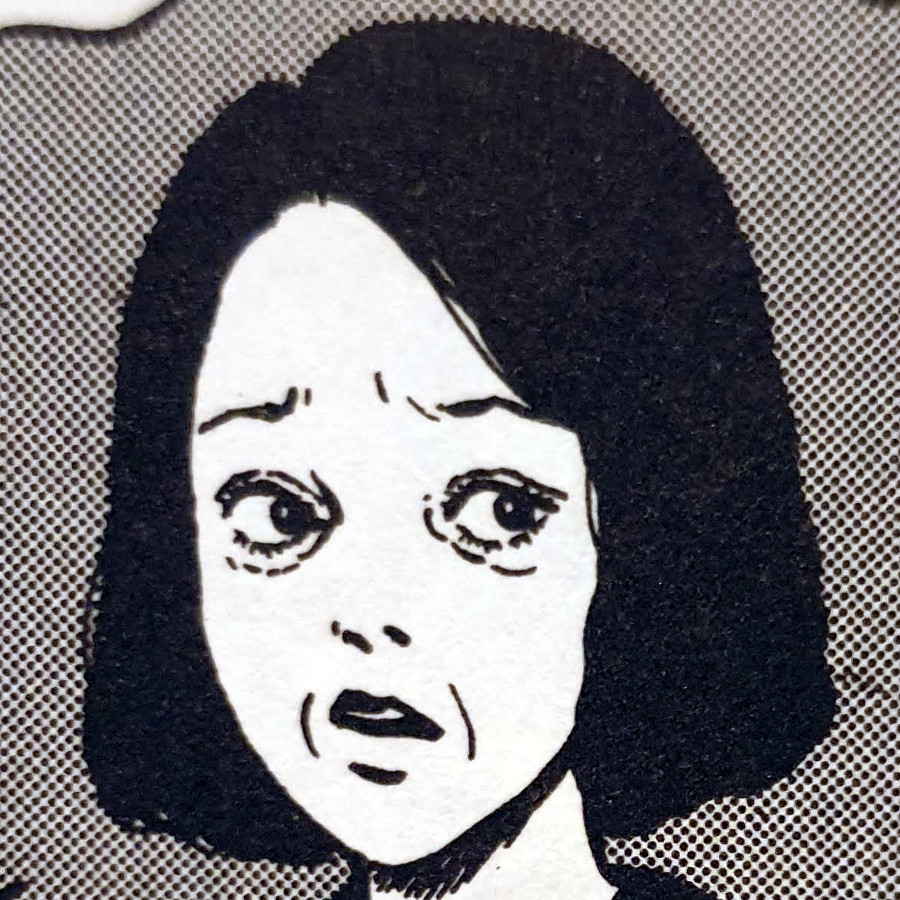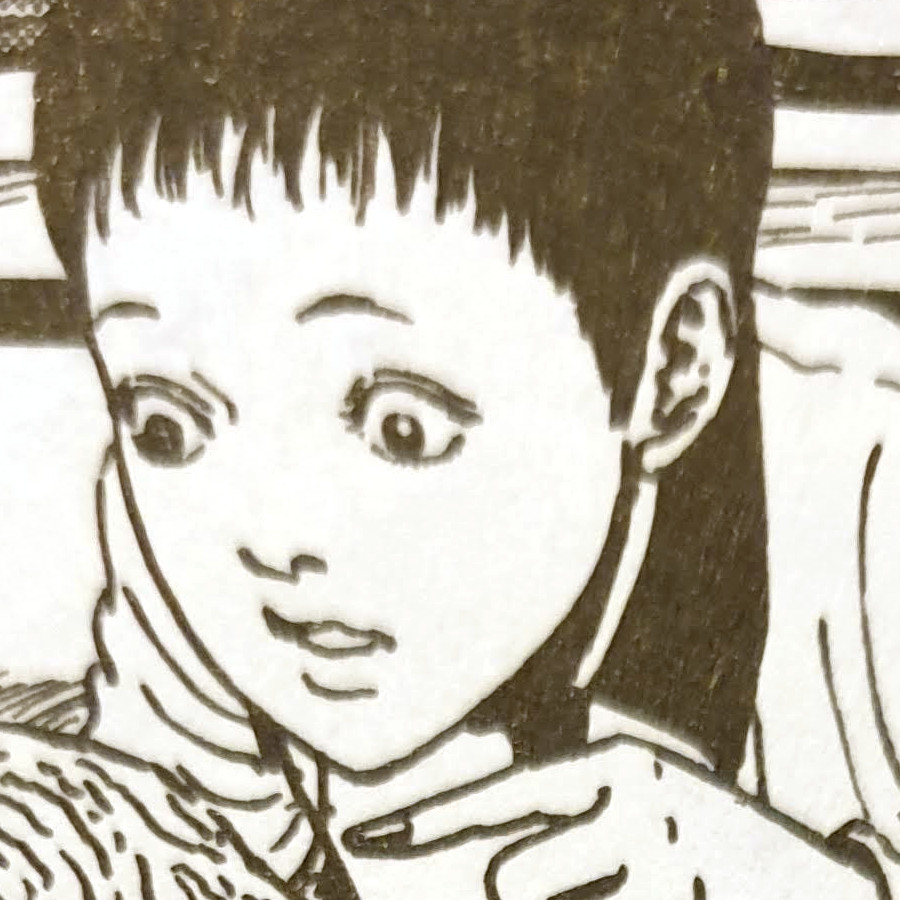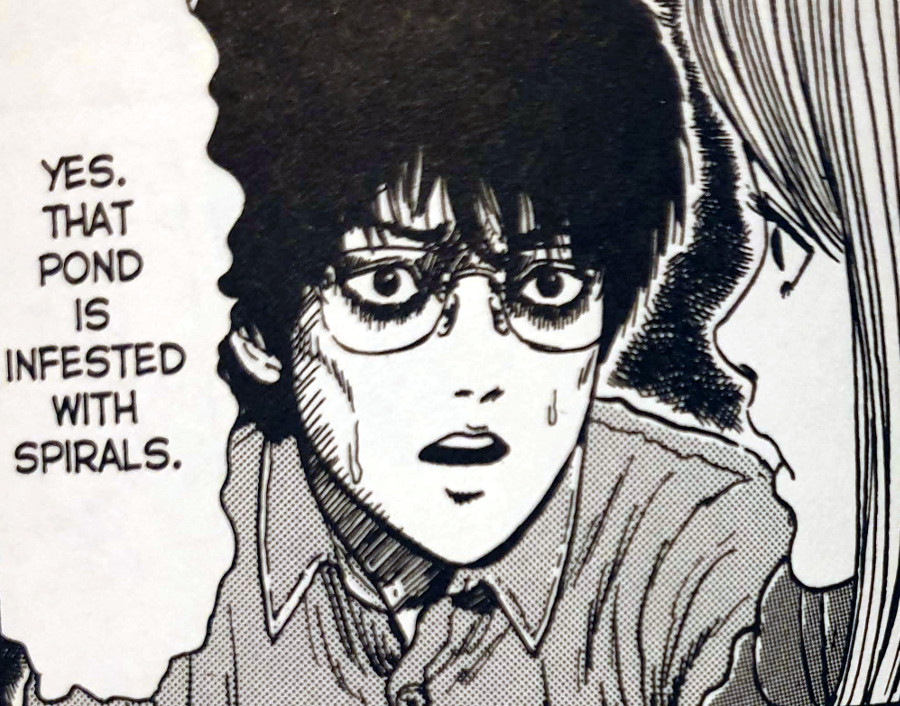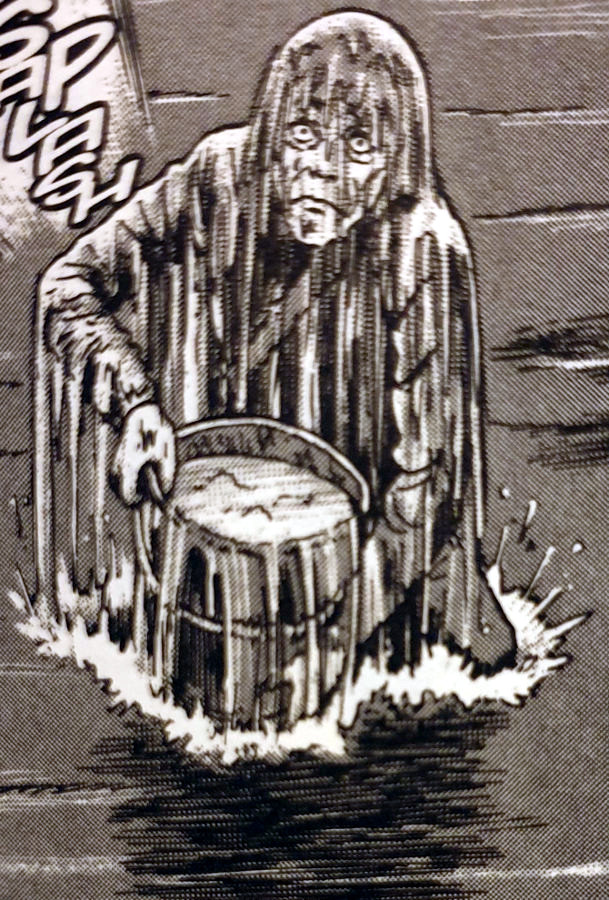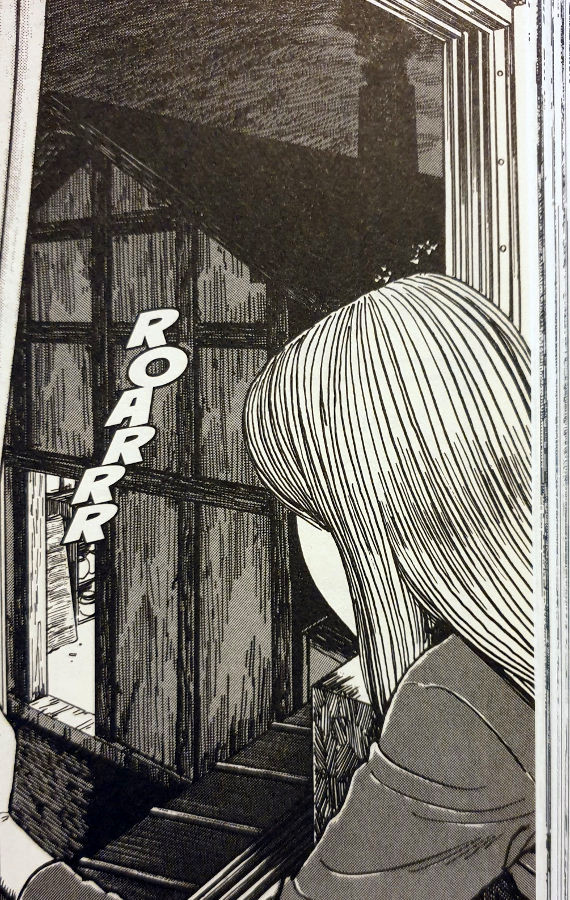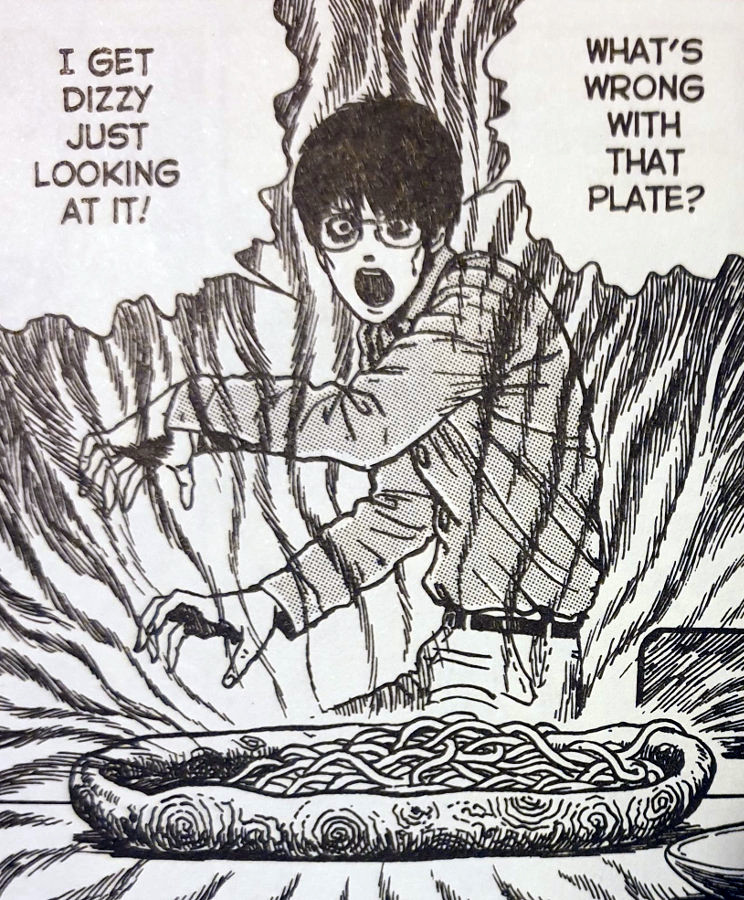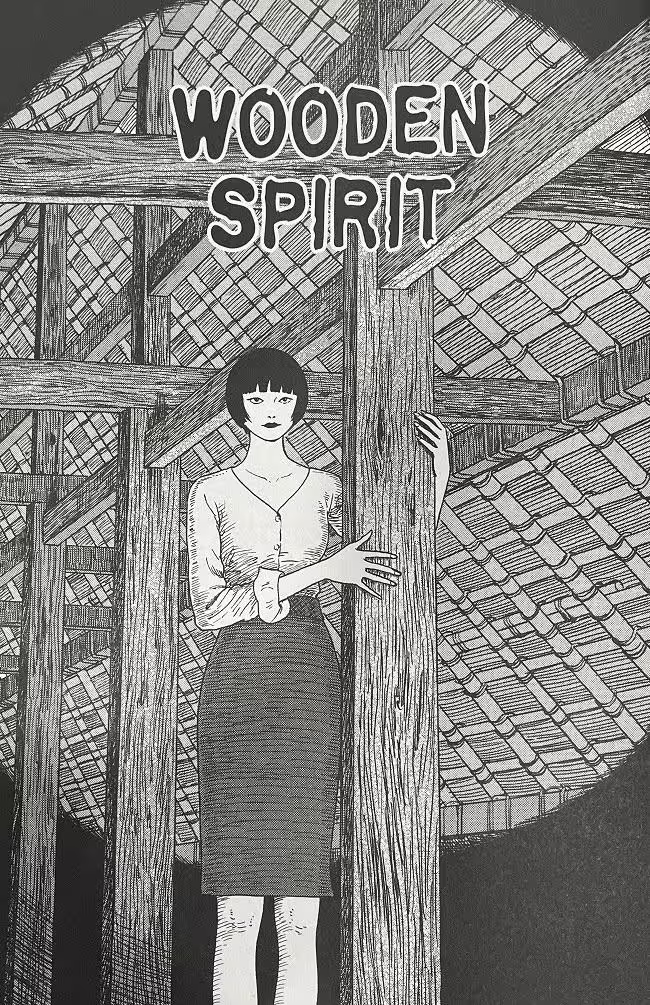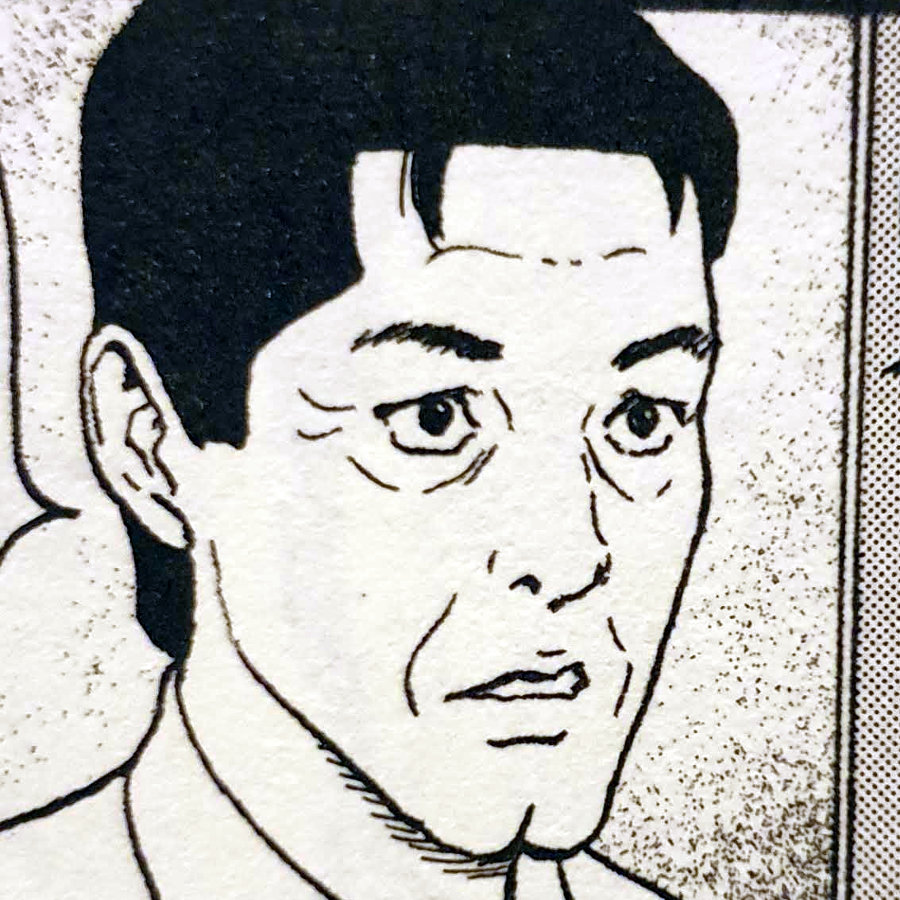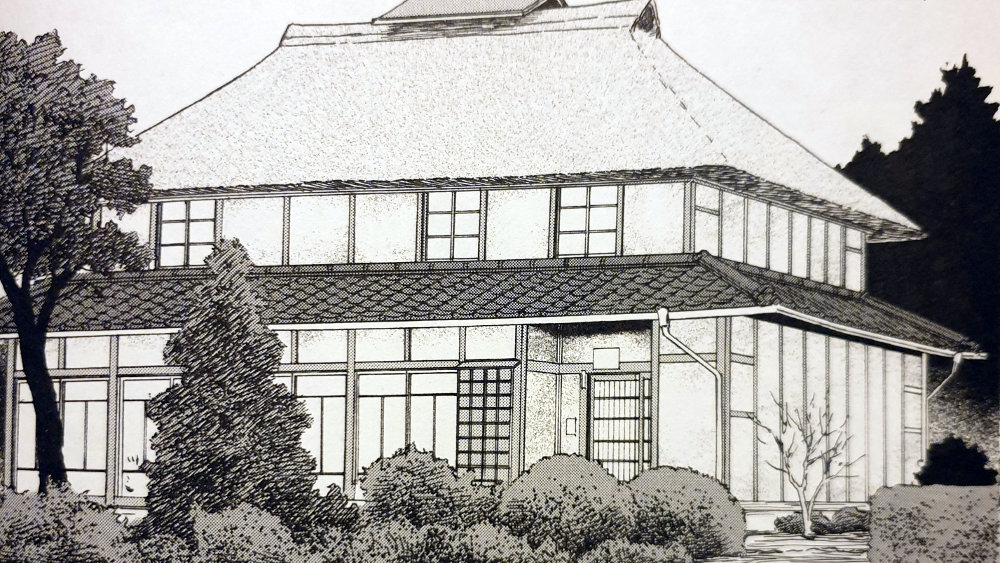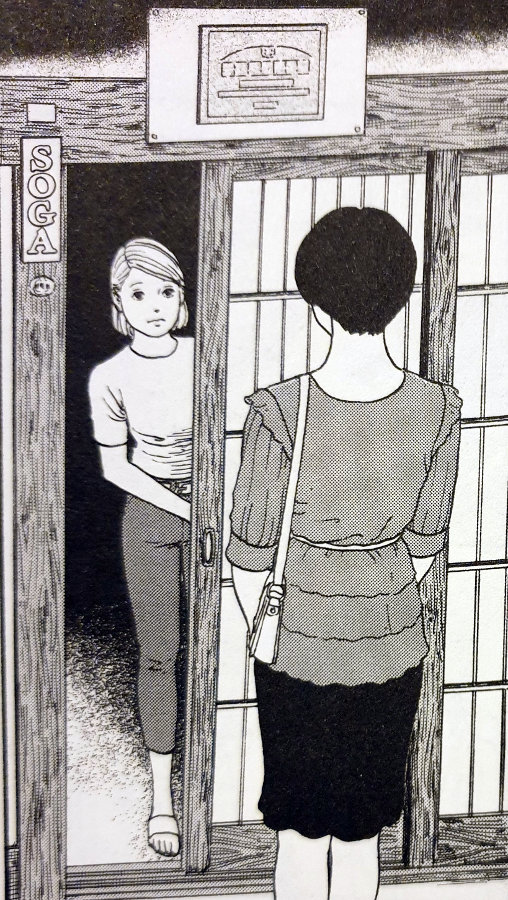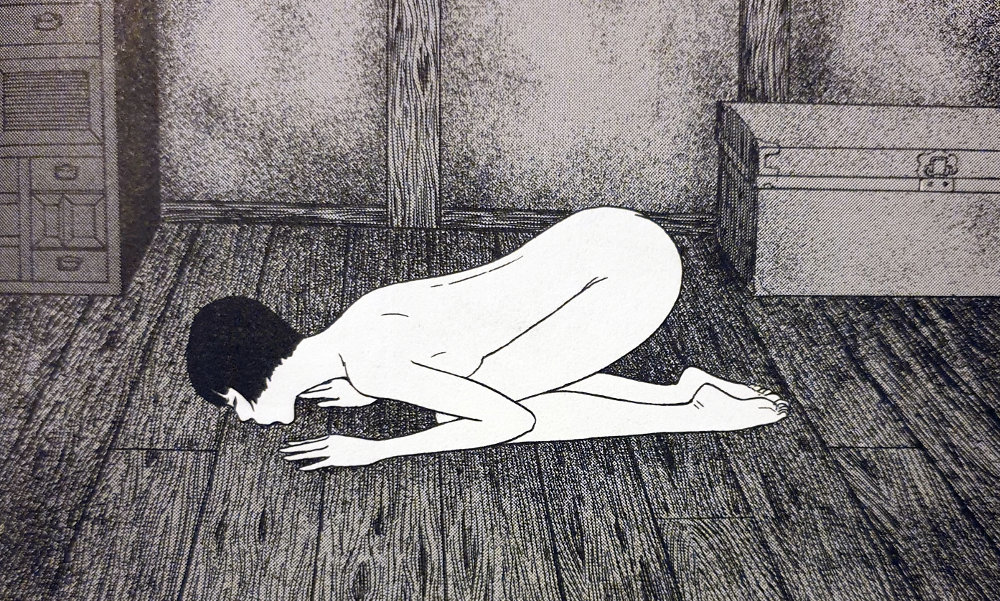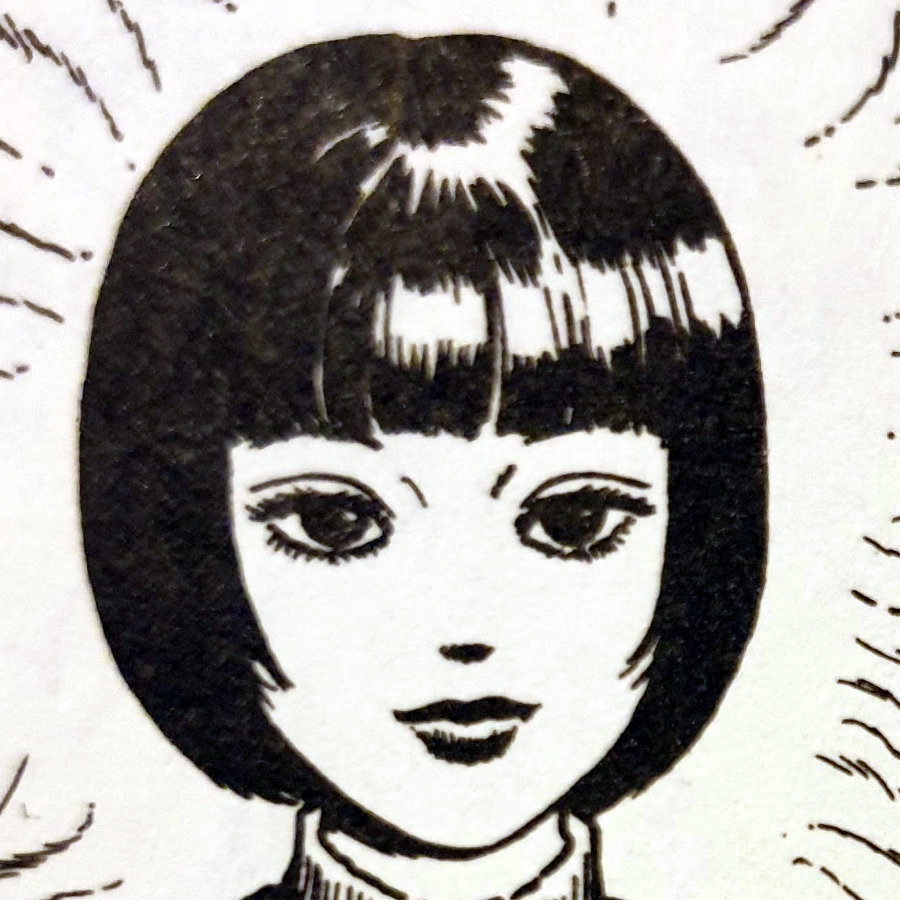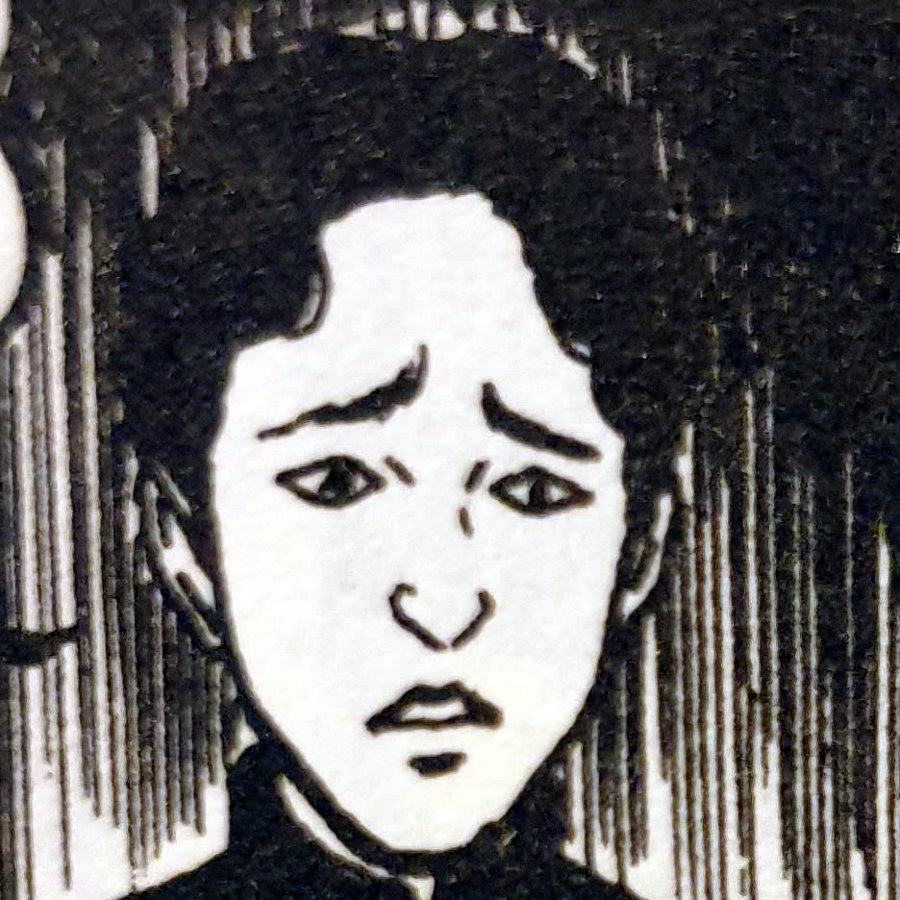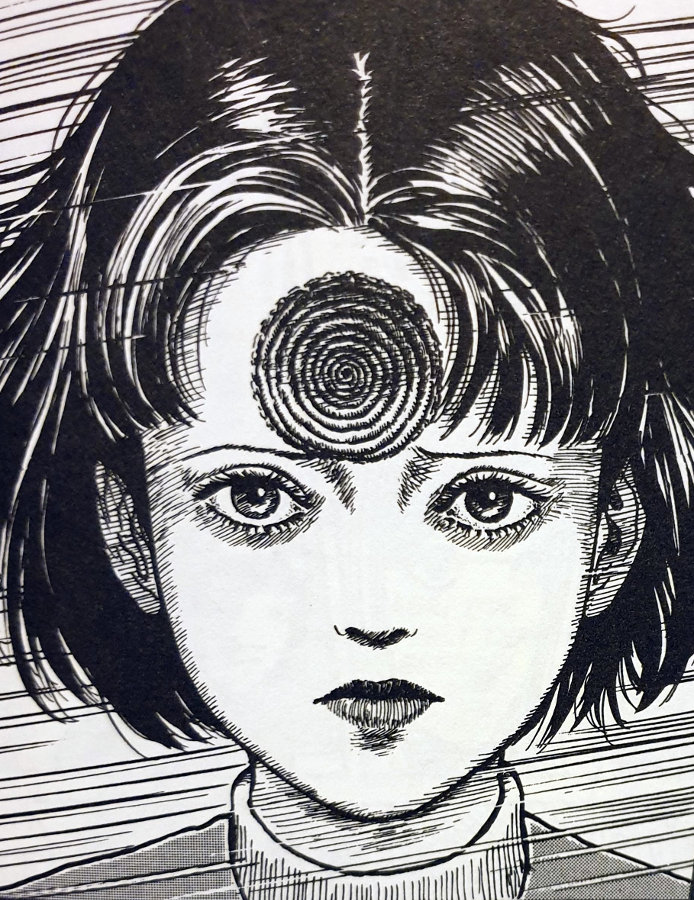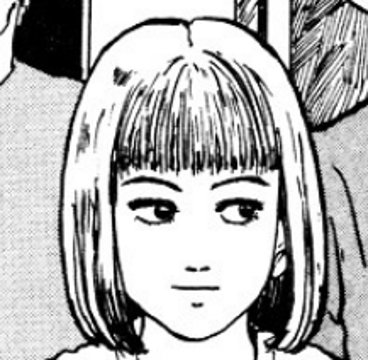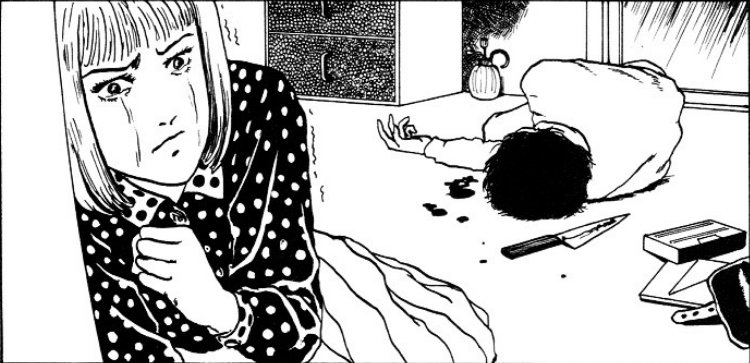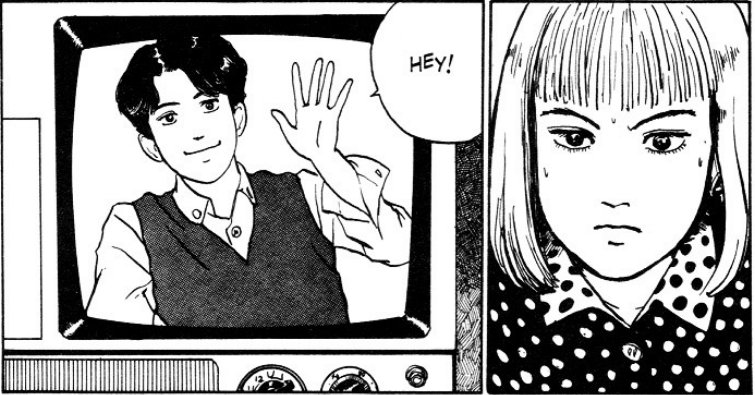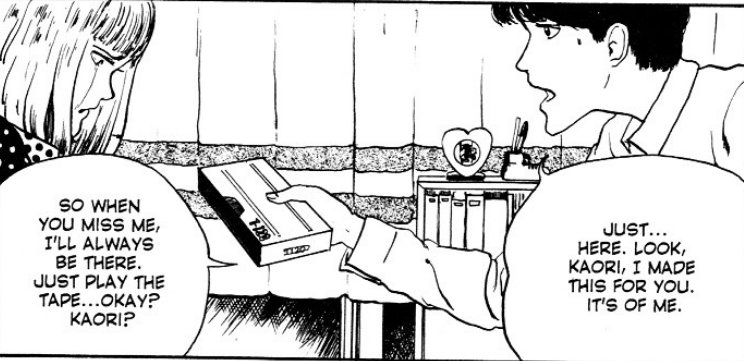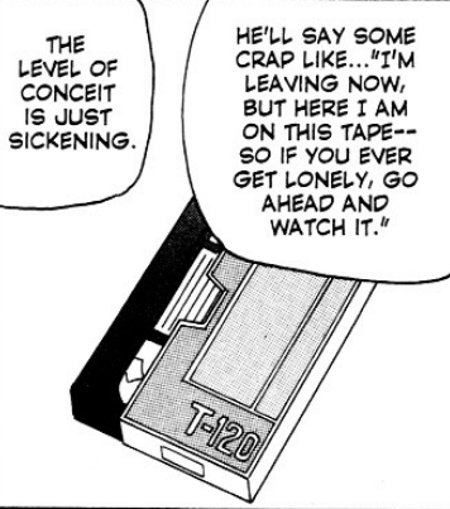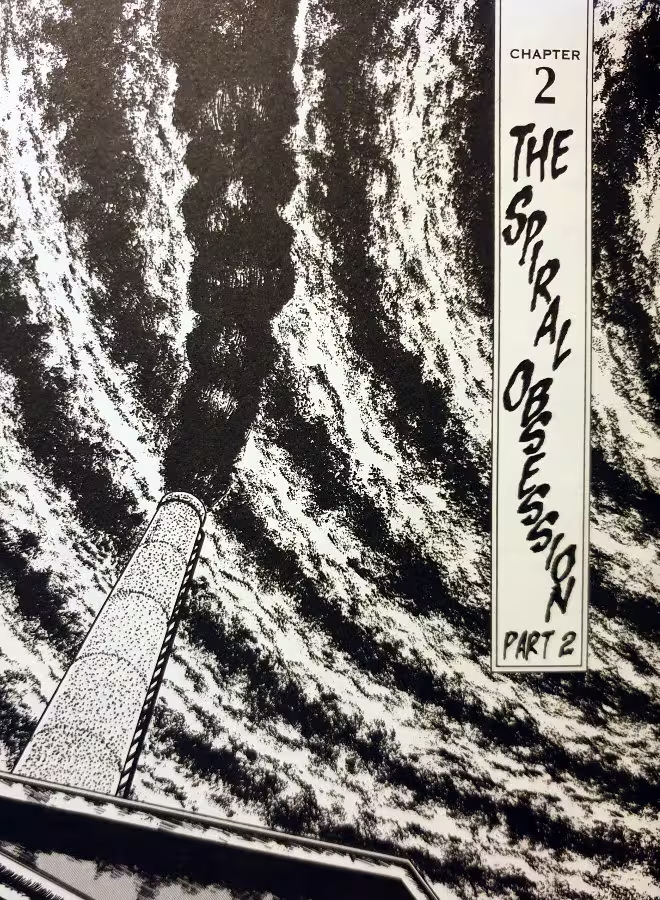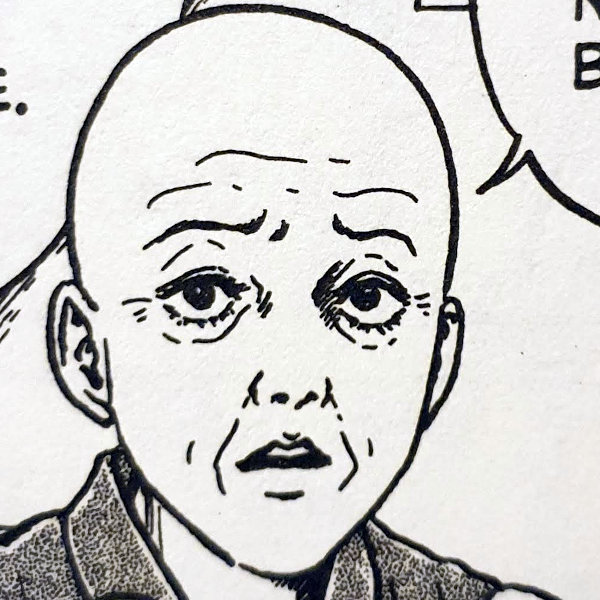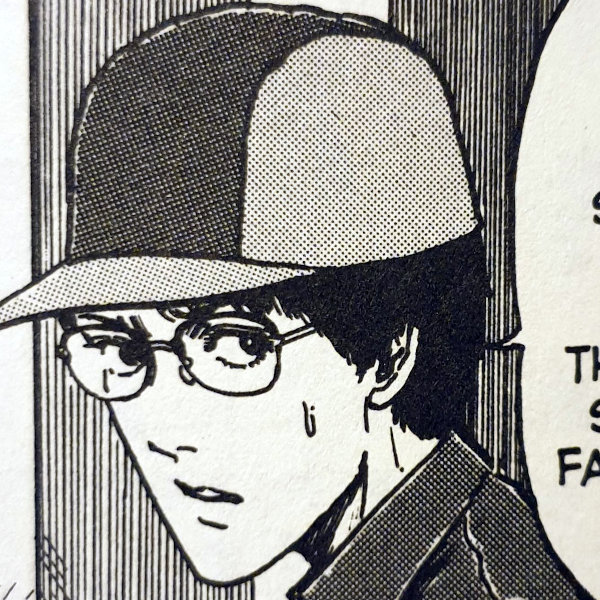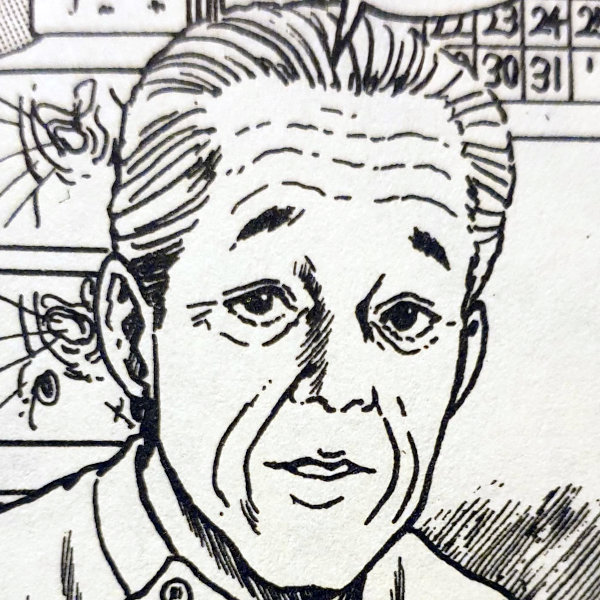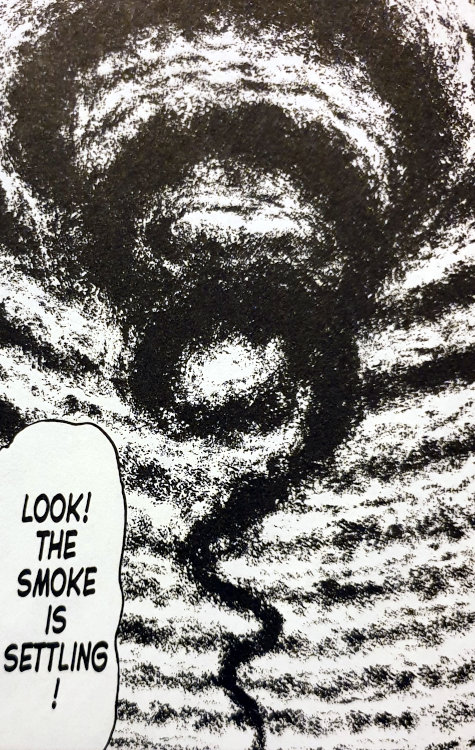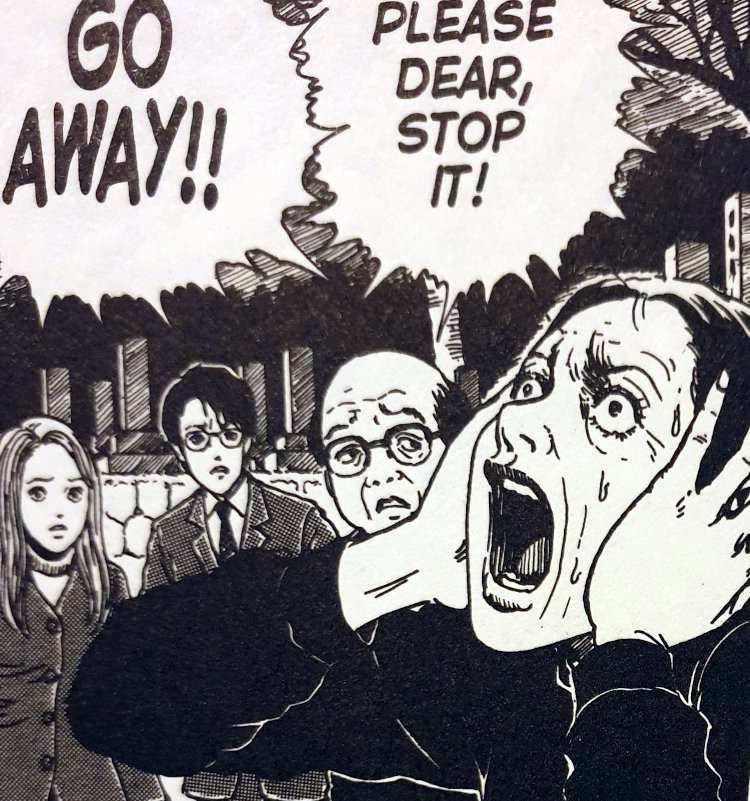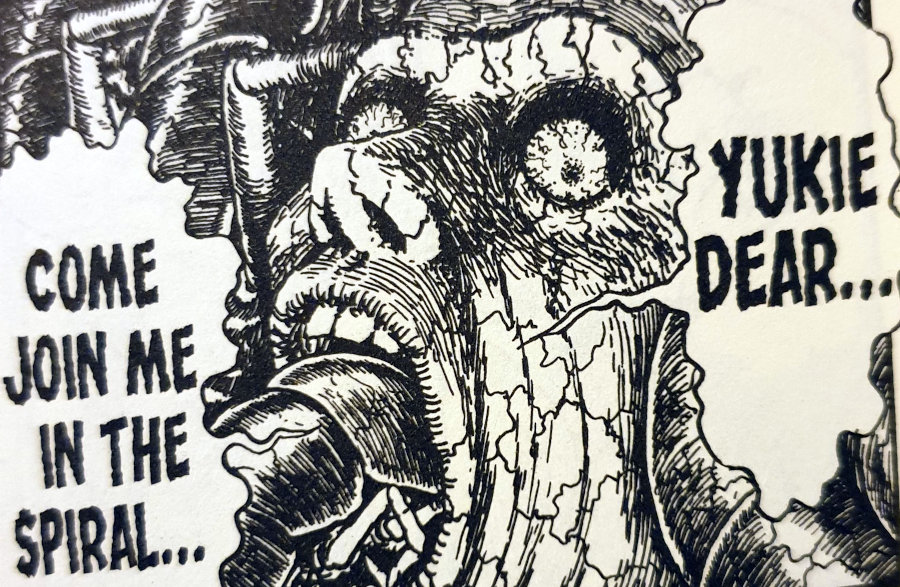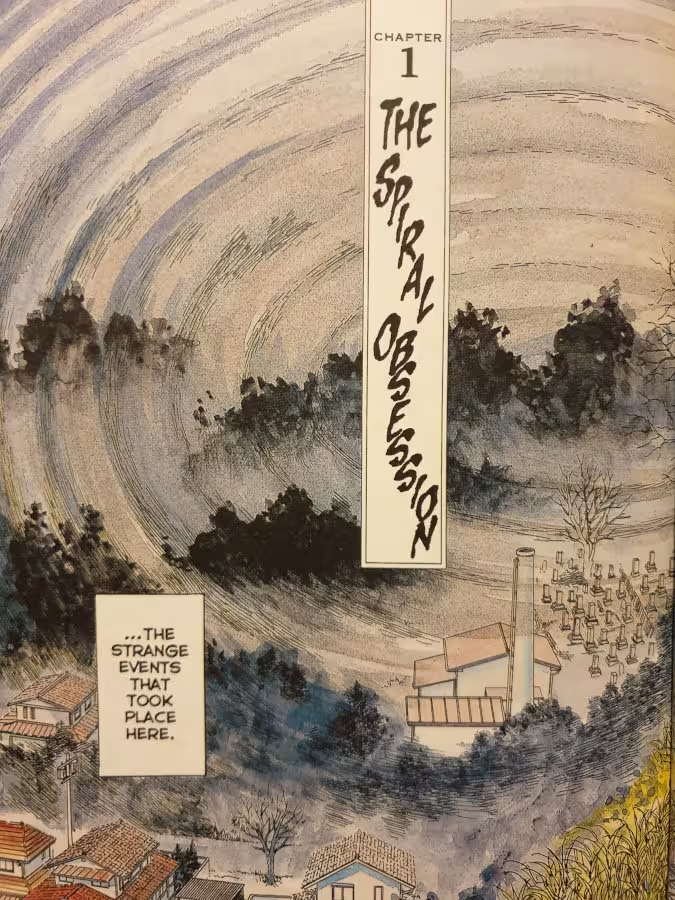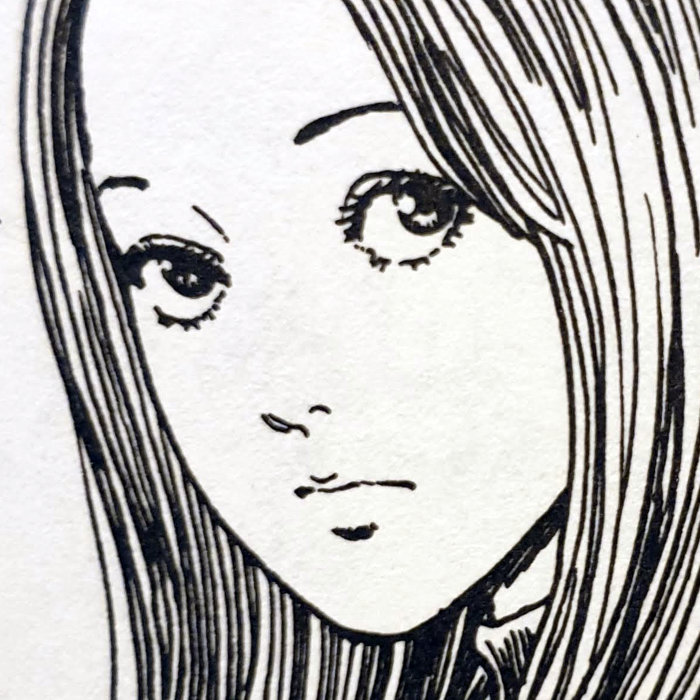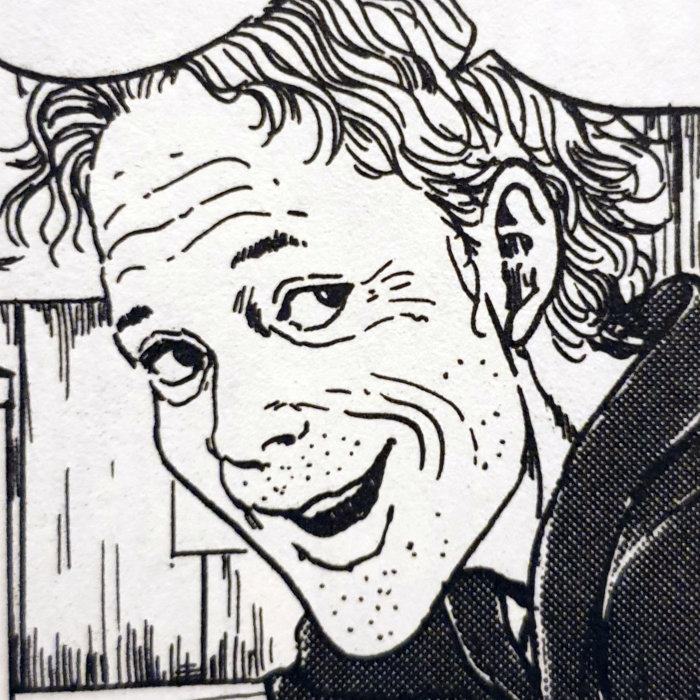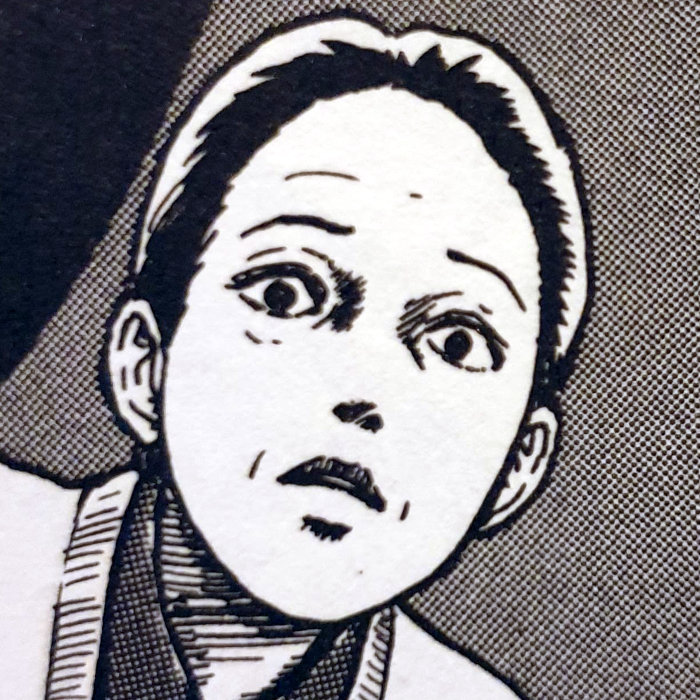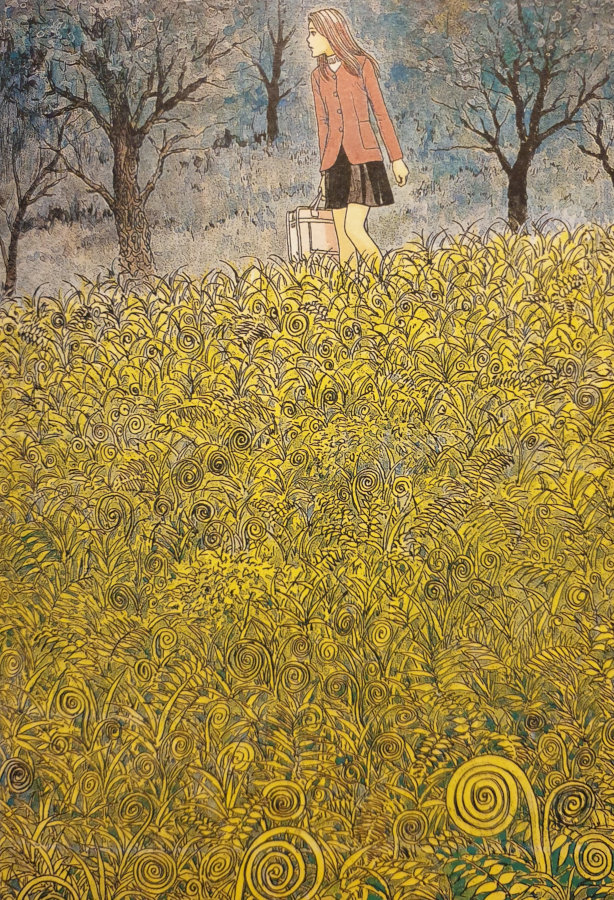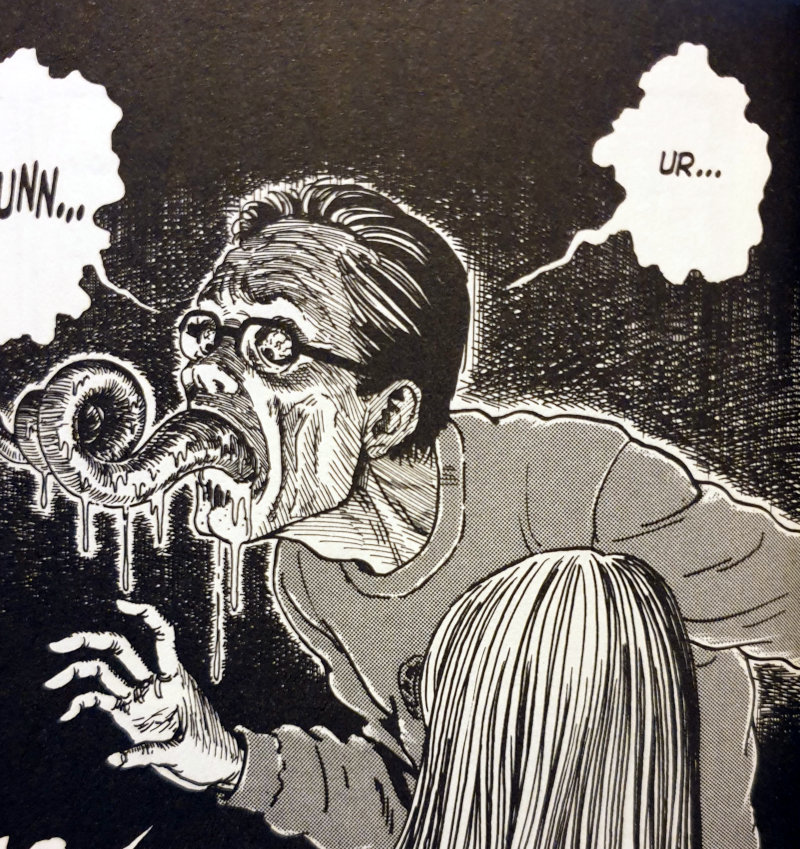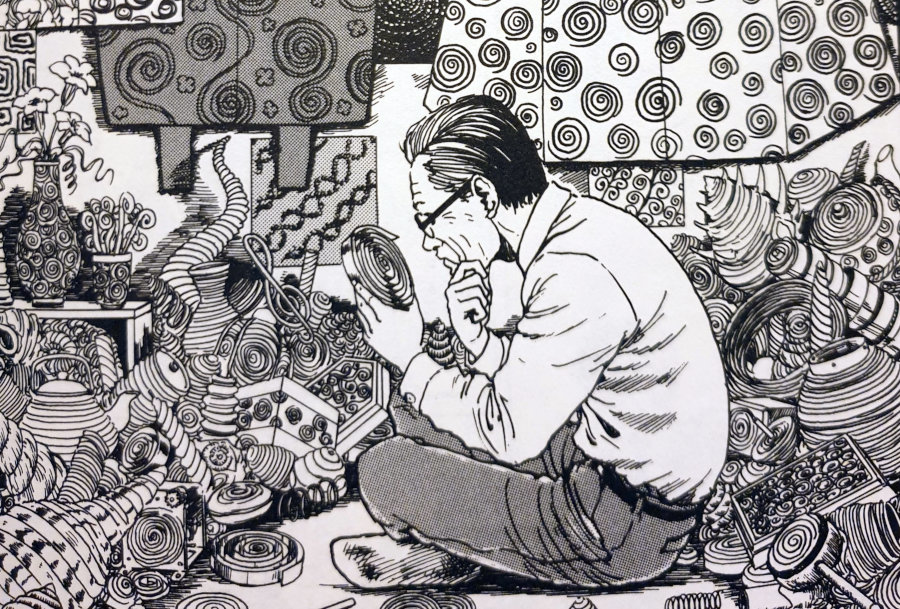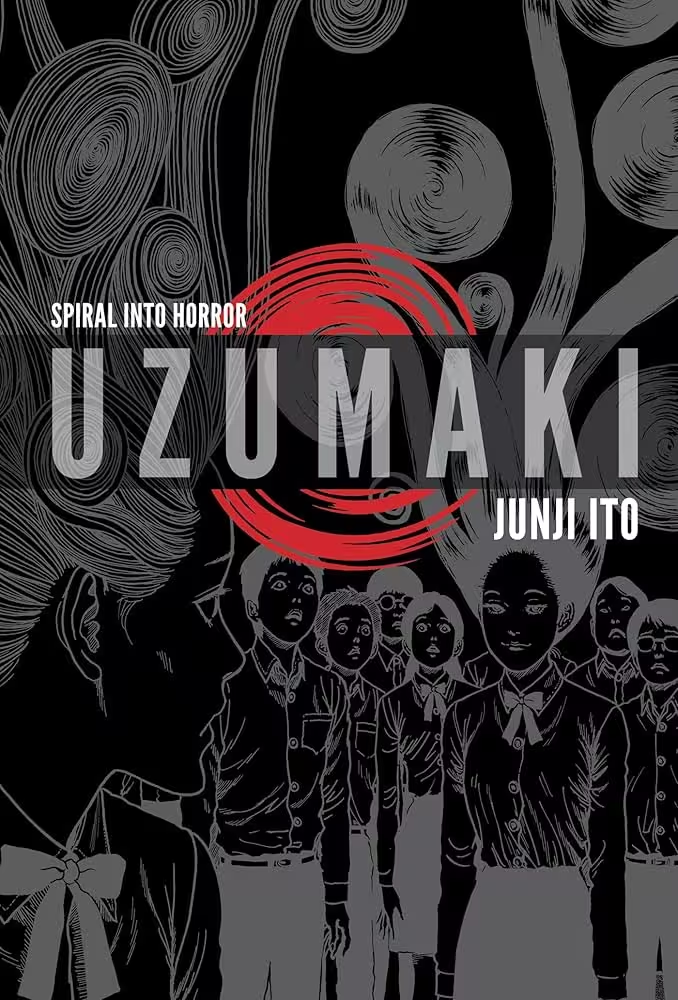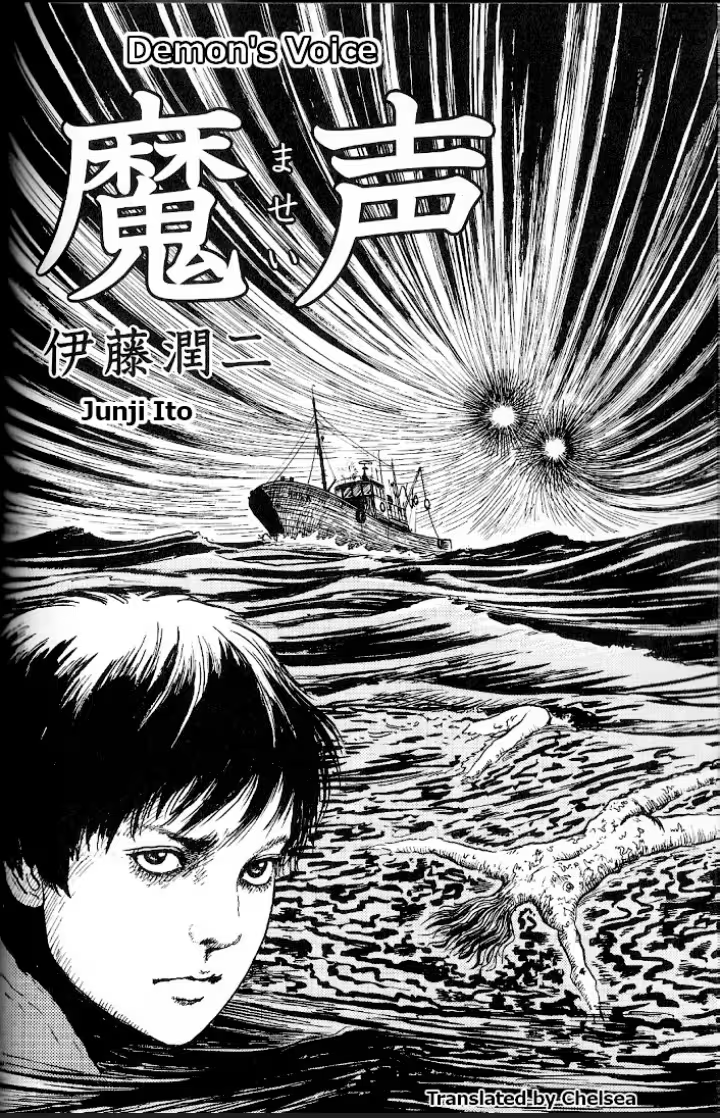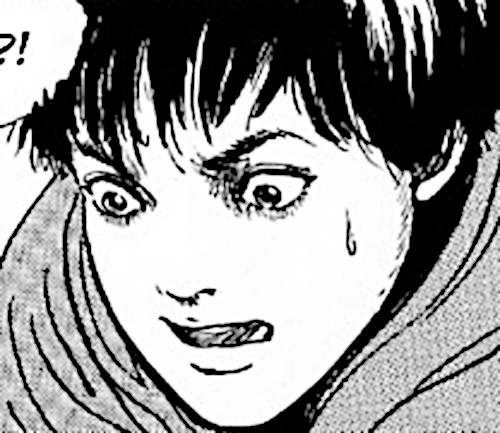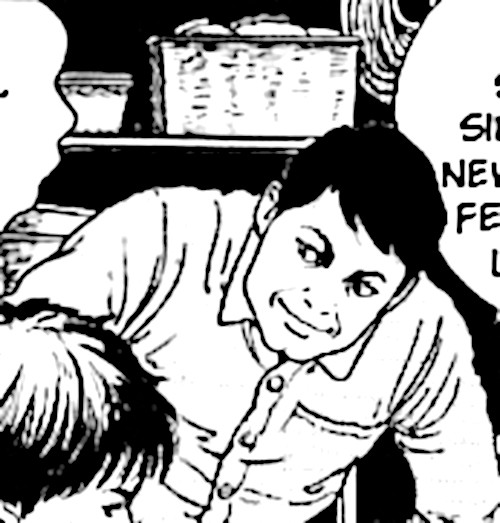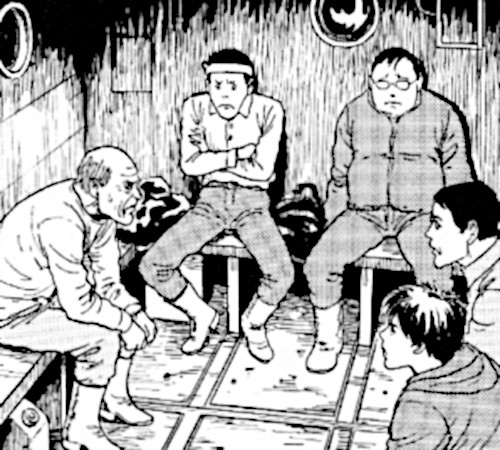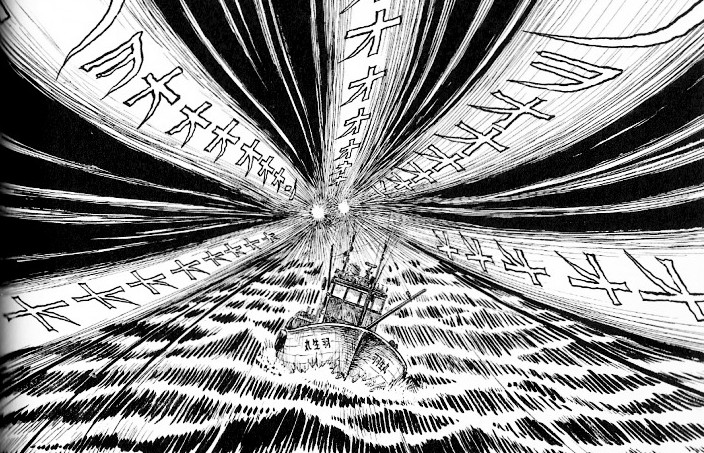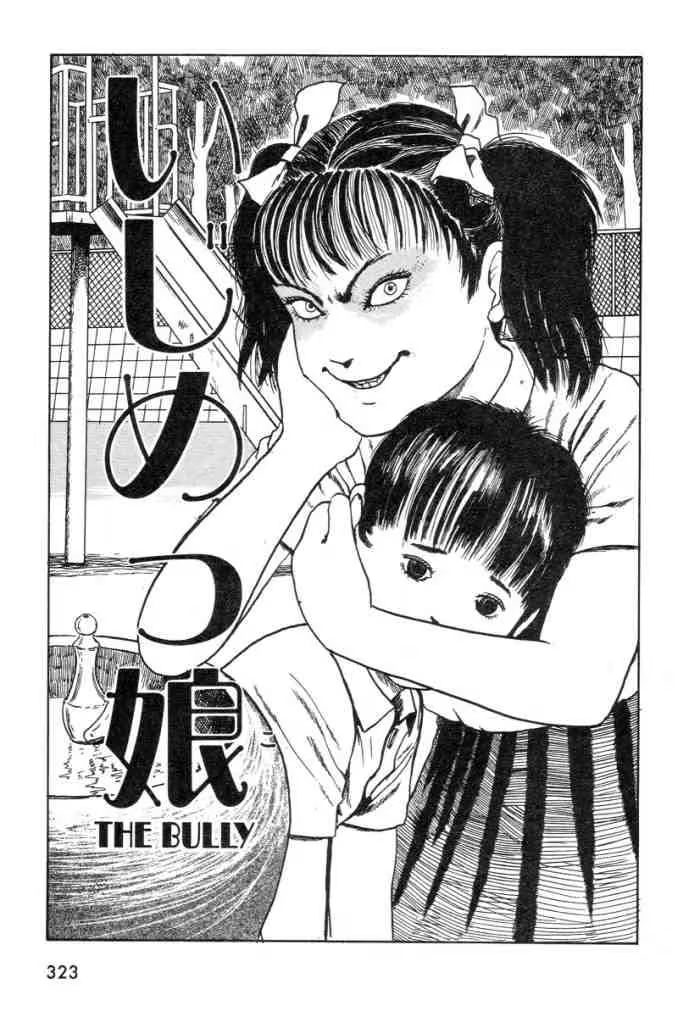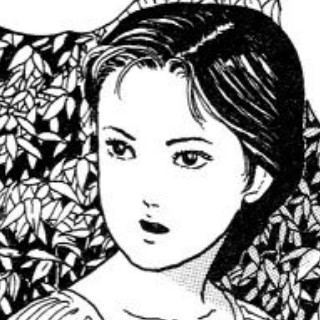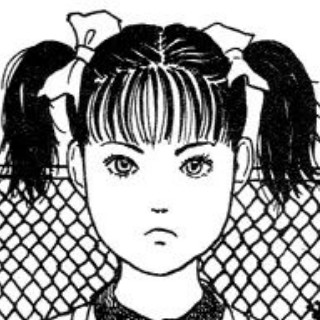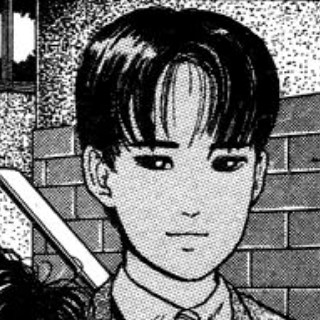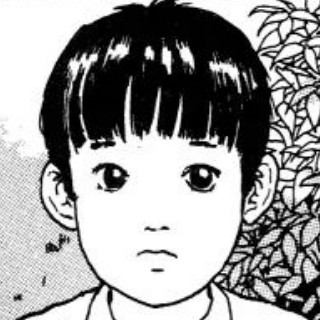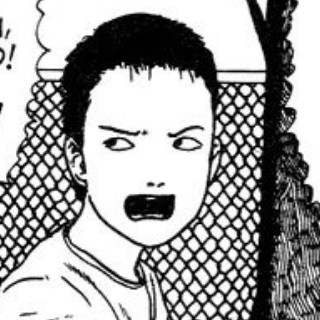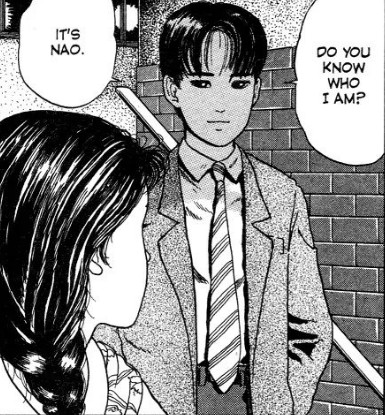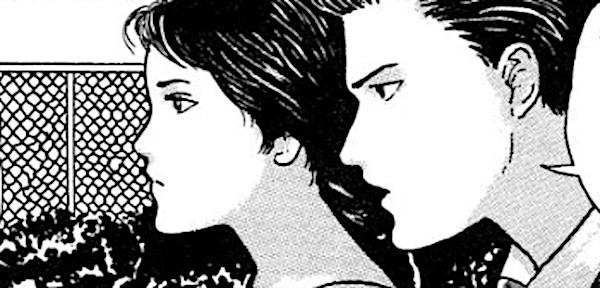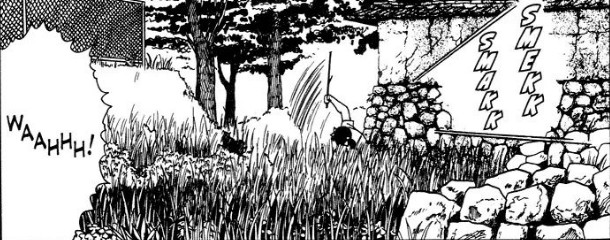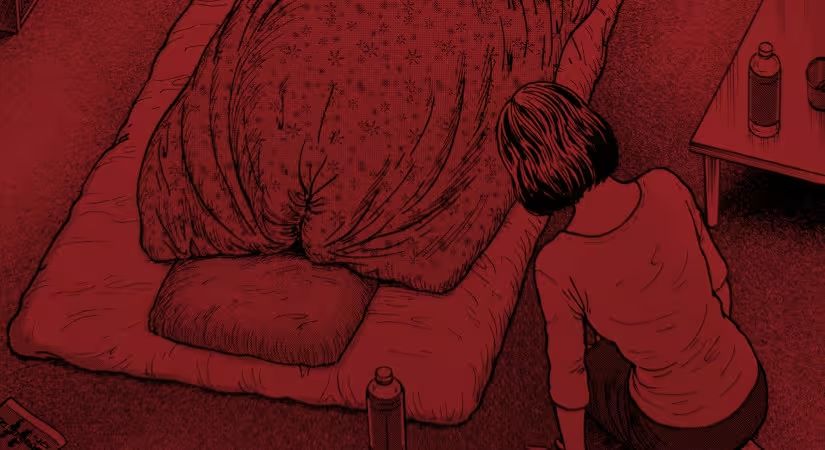My love for you will stop this car!
Mitsuru believes strongly in his love for Kirie
Jack in the Box — Synopsis
Kirie Goshima has an admirer, and an annoying one at that. His name is Mitsuru Yamaguchi and he has a very frustrating habit. He keeps on jumping out and surprising Kirie at moments when she least expects it. One such time is during the walk home from school with her friend Shiho. Shiho warns him off, but he continues to annoy Kirie nonetheless. For him, this is how he shows his love for her.
After a little time, he decides to send Kirie a present in the mail. However, instead of opening it she decides to meet up with him to return the gift. He seems sincere in his affection at this point and decides to prove his love once and for all. Declaring that his love is strong enough to stop traffic, he jumps out into the path of a moving car. A final jump that sees his body wrapped around the front wheel of the unsuspecting driver.
After Mitsuru’s funeral, Kirie is wracked with guilt over his untimely death. But it may not be the last she has heard from him – this is Kurouzu-cho after all. The spiral is ever-present and can make all sorts of things possible.
One evening while talking through the grief with her boyfriend Shuichi, she gets a terrifying vision from the gift that Mitsuru had left her. She discovers that the present is a very apt one for it’s sender — it is a Jack in the Box. The Jack in the Box seems to tell her that his death was indeed her fault. And not only that, but that Mitsuru will come back for her too.
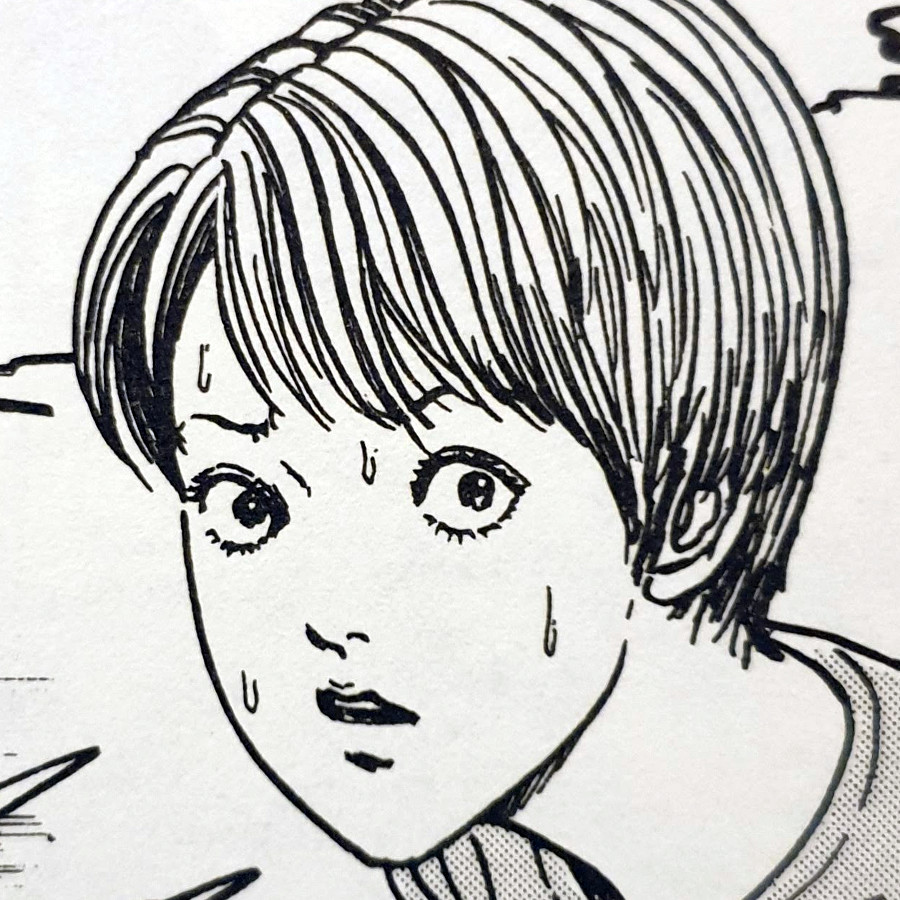


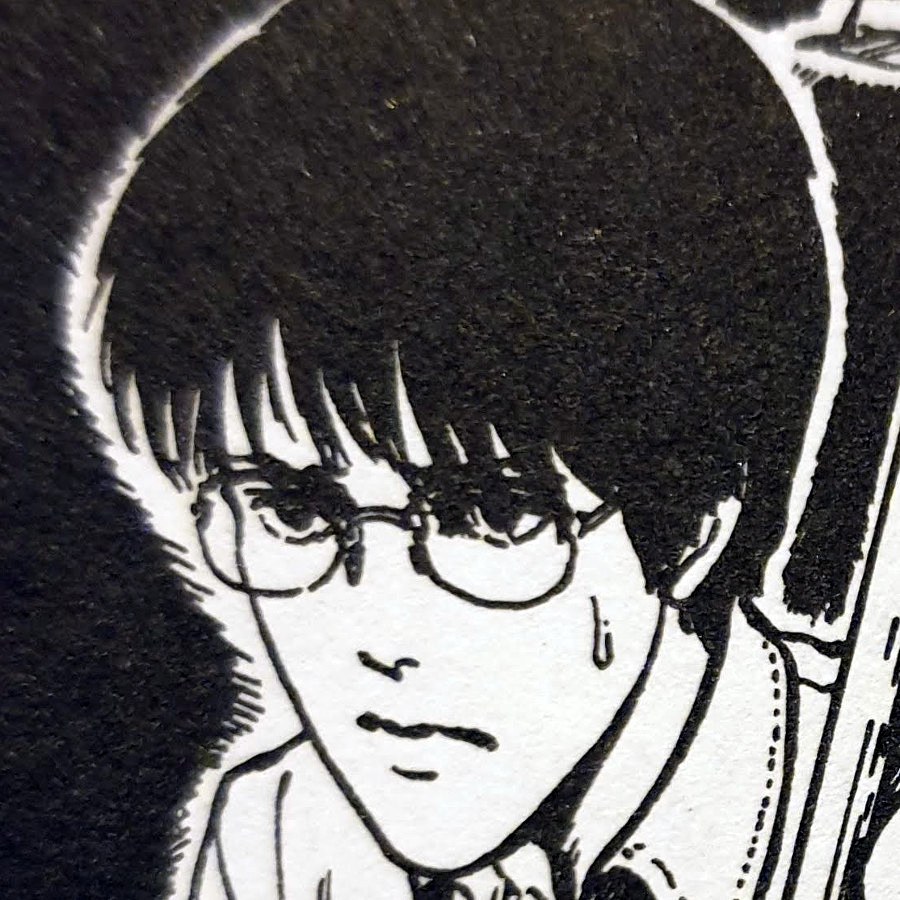
Deciding to find out the truth behind the Jack’s whispers, and to try and rid her head of its voices, Kirie and Shuichi take a shovel to Mitsuru’s grave to ensure he is in fact dead. But they are not prepared for what they find in the ground.
The subtleness of the Spiral
When seen from above, a coiled spring will display the shape of the spiral. Not only that but the spring can also represent the releasing of stored energy. This idea could well be what gave birth to the character of Mitsuru. But it isn’t until the closing pages when this becomes apparent. Once you’ve read it once, the spiral can be seen throughout this chapter. He is the metaphorical coiled spring jumping out at Kirie again and again. But until you’ve read it, the spiral is indeed subtle.
Inanimate objects with human likeliness always have the potential for horror. Just think ceramic dolls and old toys in the attic. But what I loved in this chapter was that not only did Junji Ito manage to depict an otherwise innocent Jack in the Box as demonic and foreboding. He also managed to have it perfectly represent the key character, Mitsuro.
The spiral has had a very visual presence in the town so far. It has appeared in cremation smoke, pottery and even throughout victims’ hair. But this is perhaps the most subtle that the spiral has been up till now. In fact, I would be so bold as to say that this chapter could almost be read outside of Uzumaki altogether.
The way in which Ito ties the character of Mitsuru to that of a Jack in the Box was a stroke of genius. Especially when he later makes use of the spring from the car that killed him to make his complete transformation. Yes, the spiral is present in the springs throughout, but take the spiral obsession out of the equation and you still have a strong horror nightmare with an almost self-fulfilling prophecy.
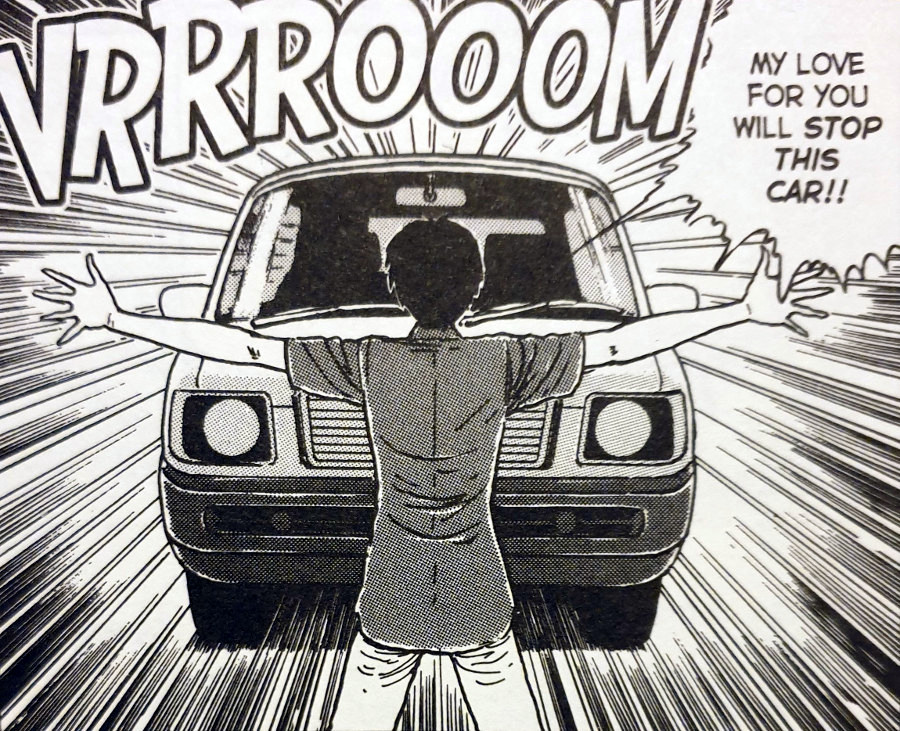
Coiled up terror
As I began writing up my thoughts on ‘Jack in the Box’, I began to notice how the chapter’s structure itself felt just like a coiled spring. With each unwanted jump scare from Mitsuru winding up the metaphorical coil until he is stopped dead in his tracks by that car. That impact and his winding quickly around the front wheel of that car are the first glimpses of horror we see, and the first release of the coiled spring of the chapter.
Once the funeral is done with, Kirie’s descent into guilt and the foreboding presence of the Jack in the box toy, wind up the chapter’s final spring. It is wound up tightly and held with each step that her and Shuichi take through that graveyard. Until those final pages and the explosion of energy that shoots out towards them. The second spring is released and the two of them are directly in its path.
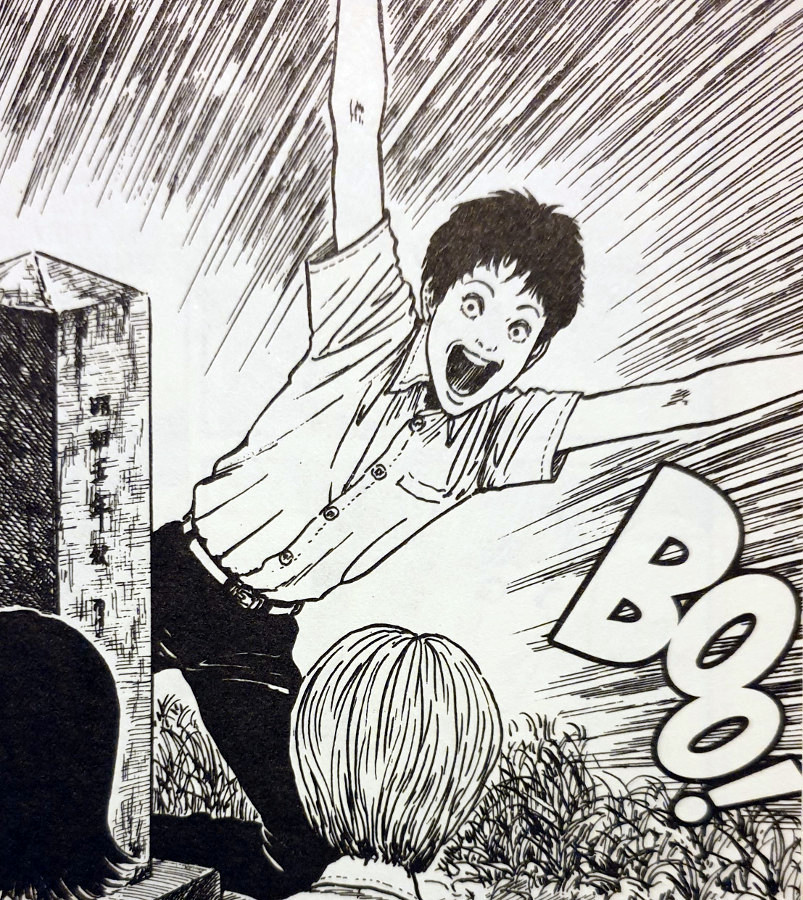
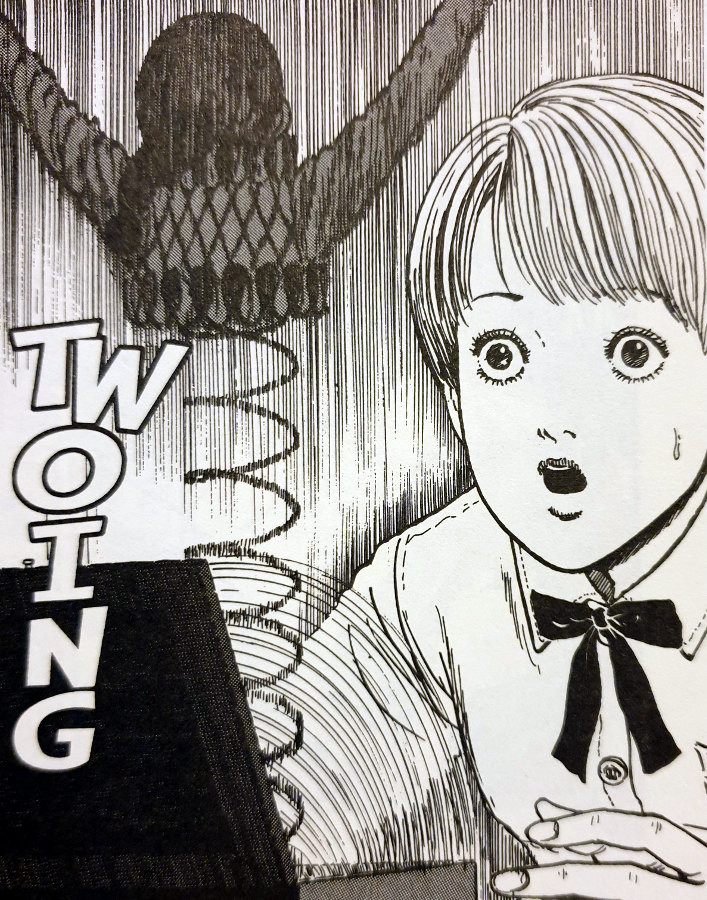
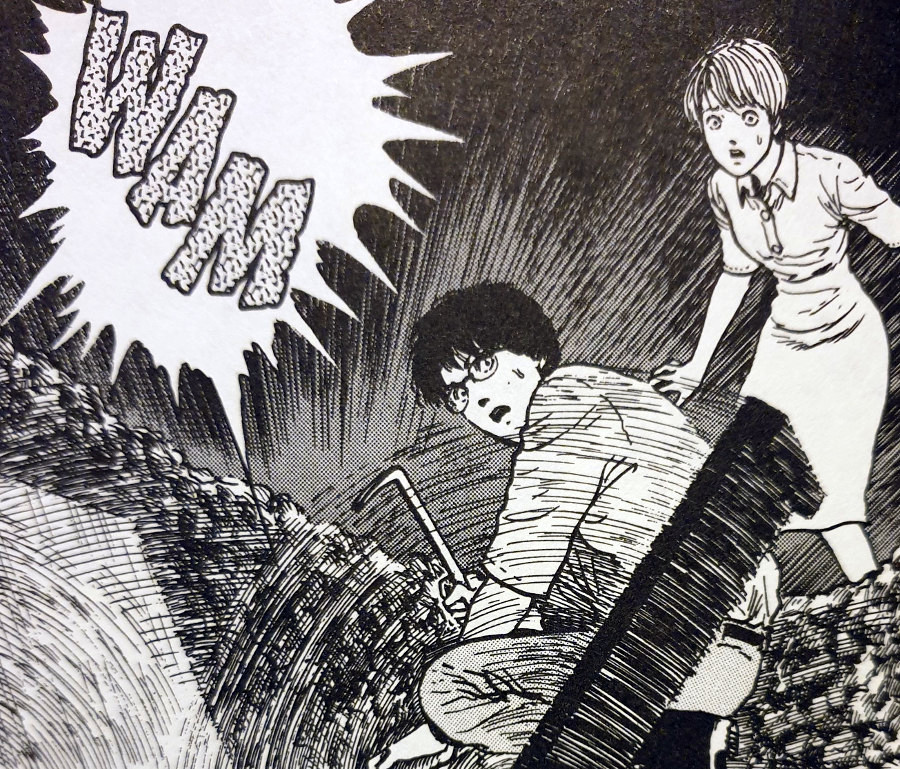

I may be reading too much into these stories, and perhaps seeing things that I want to see, but that is precisely why I’m writing these thoughts up. I just love seeing what my mind can find beneath the surface of Ito’s work — and as I have quickly come to realise, there is always more to find beneath his expertly-drawn panels than meets the eye.
In Conclusion
Jack in the box is definitely a chapter that can be enjoyed on its own and without any prior context to the preceding Uzumaki chapters. Yes, there are mentions of the spiral cremation smoke trails from The Spiral Obsession opening chapters, but they are only mentioned in passing. And they are not needed to be fully understood for this chapter to be enjoyed.
Jack in the Box is one of my favourite chapters from the Uzumaki collection. Something about the character of Mitsuru and the enjoyable absurdity of his constant jumping out at Kirie have stuck with me. I think that, along with the following chapter The Slug, are images that have stayed with me the strongest since my first time reading Uzumaki some years ago.
One of the great things about this chapter for me, was how it is almost ambiguous in its final half. With both Kirie and Shuichi having already come face to face with the spiral, who’s to know if what they experience in that graveyard is real? (it probably is).
Was it just a nightmare? Who knows? (probably not). But one thing is for certain – Junji Ito sure knows how to tell one hell of a great story.



